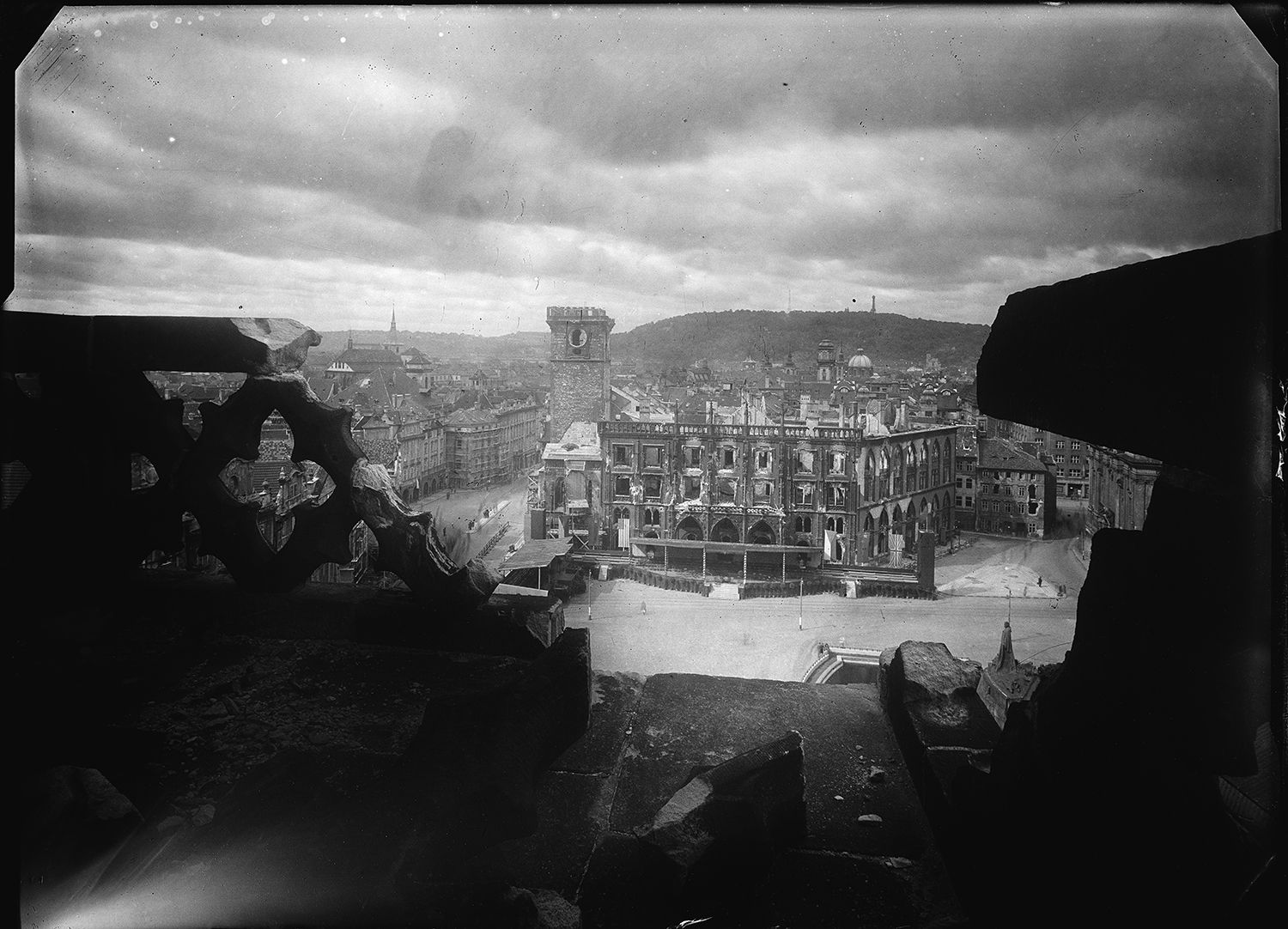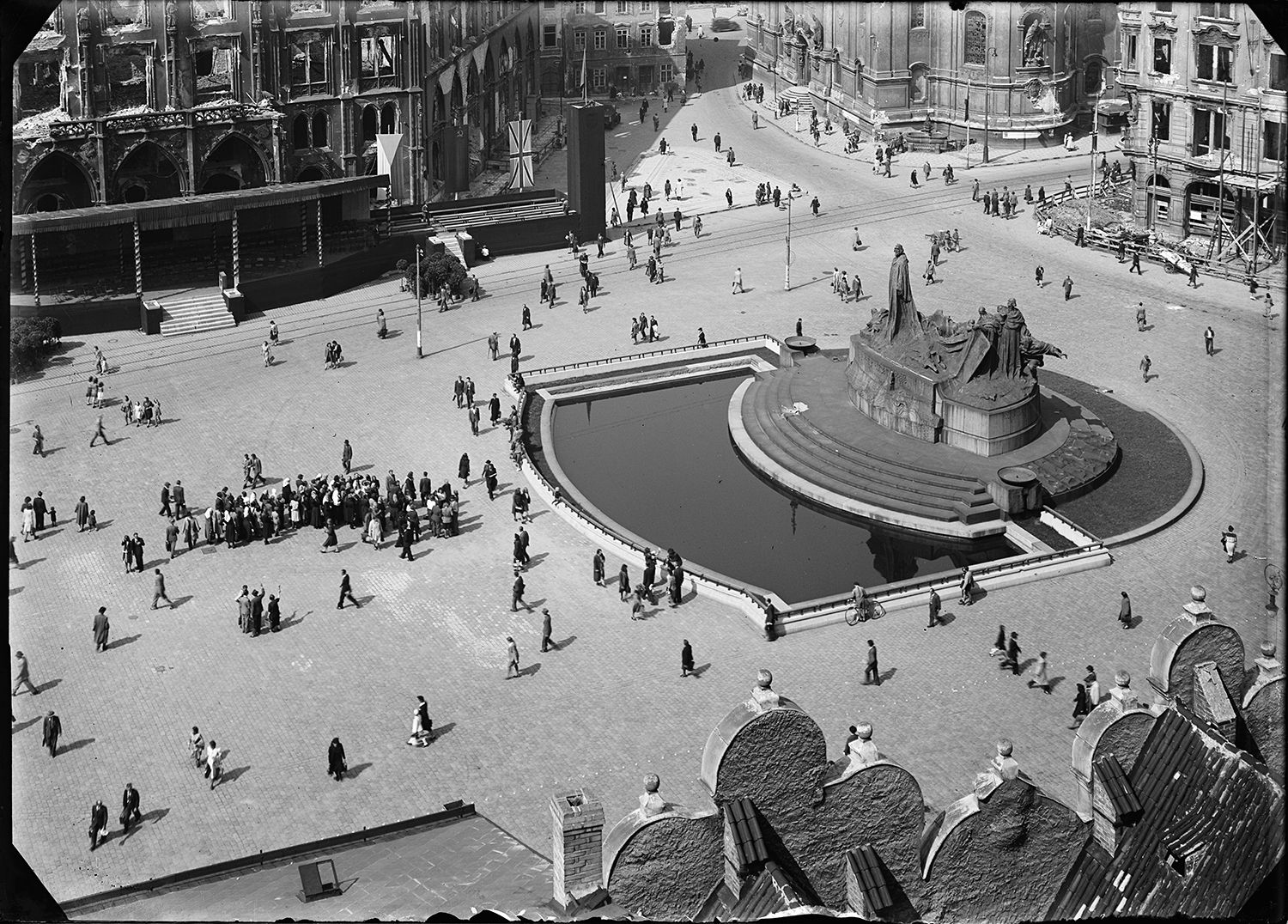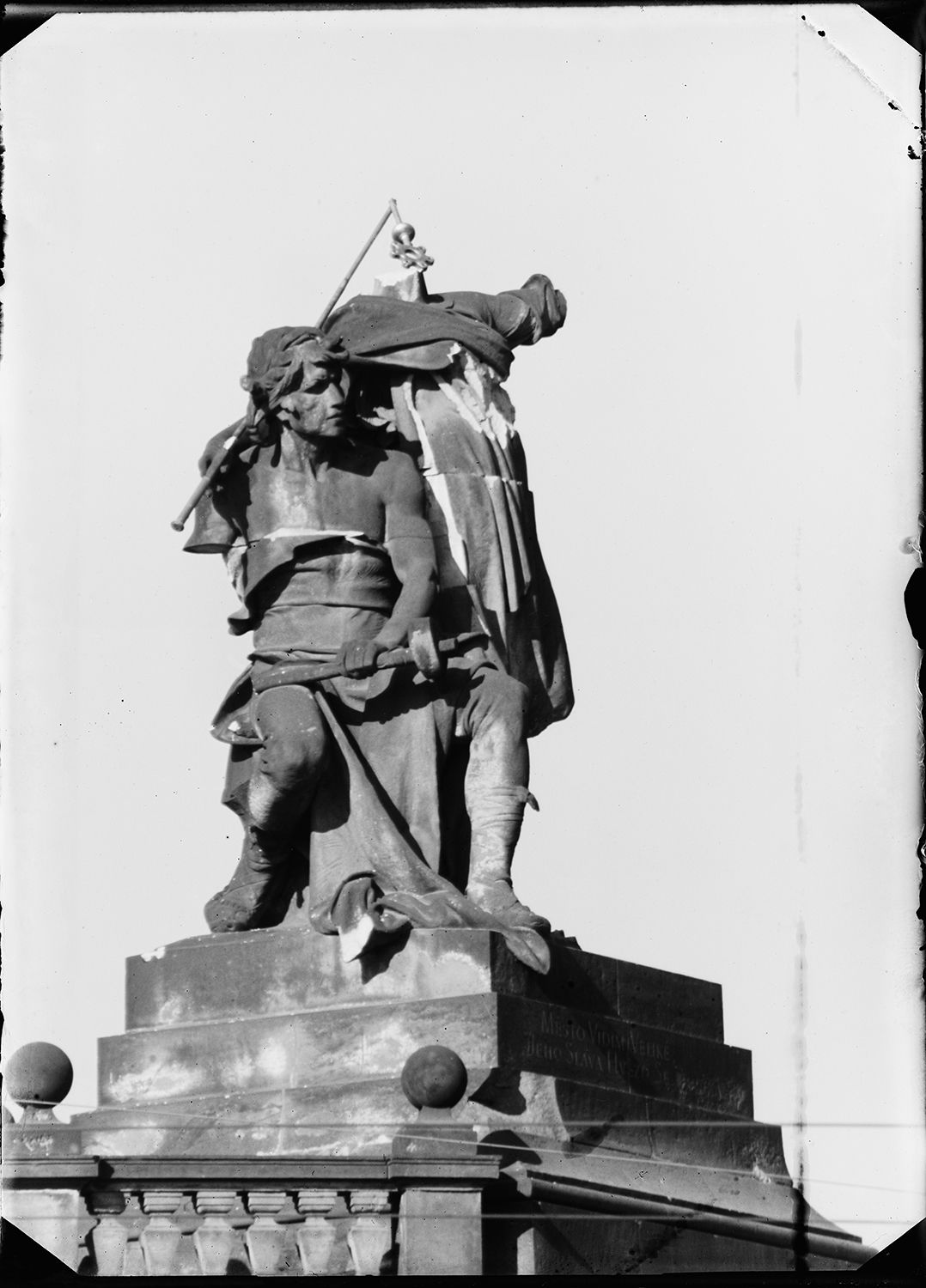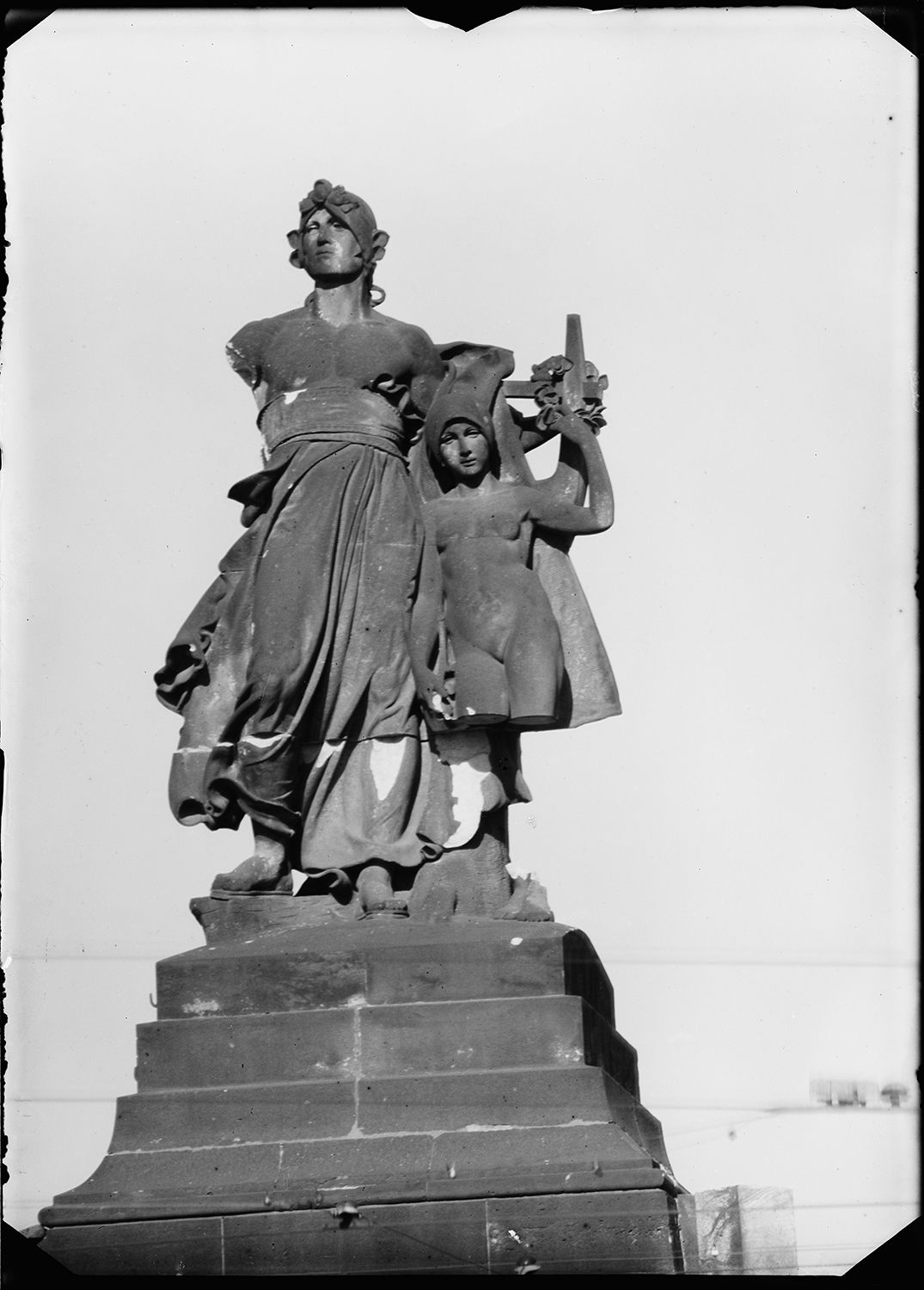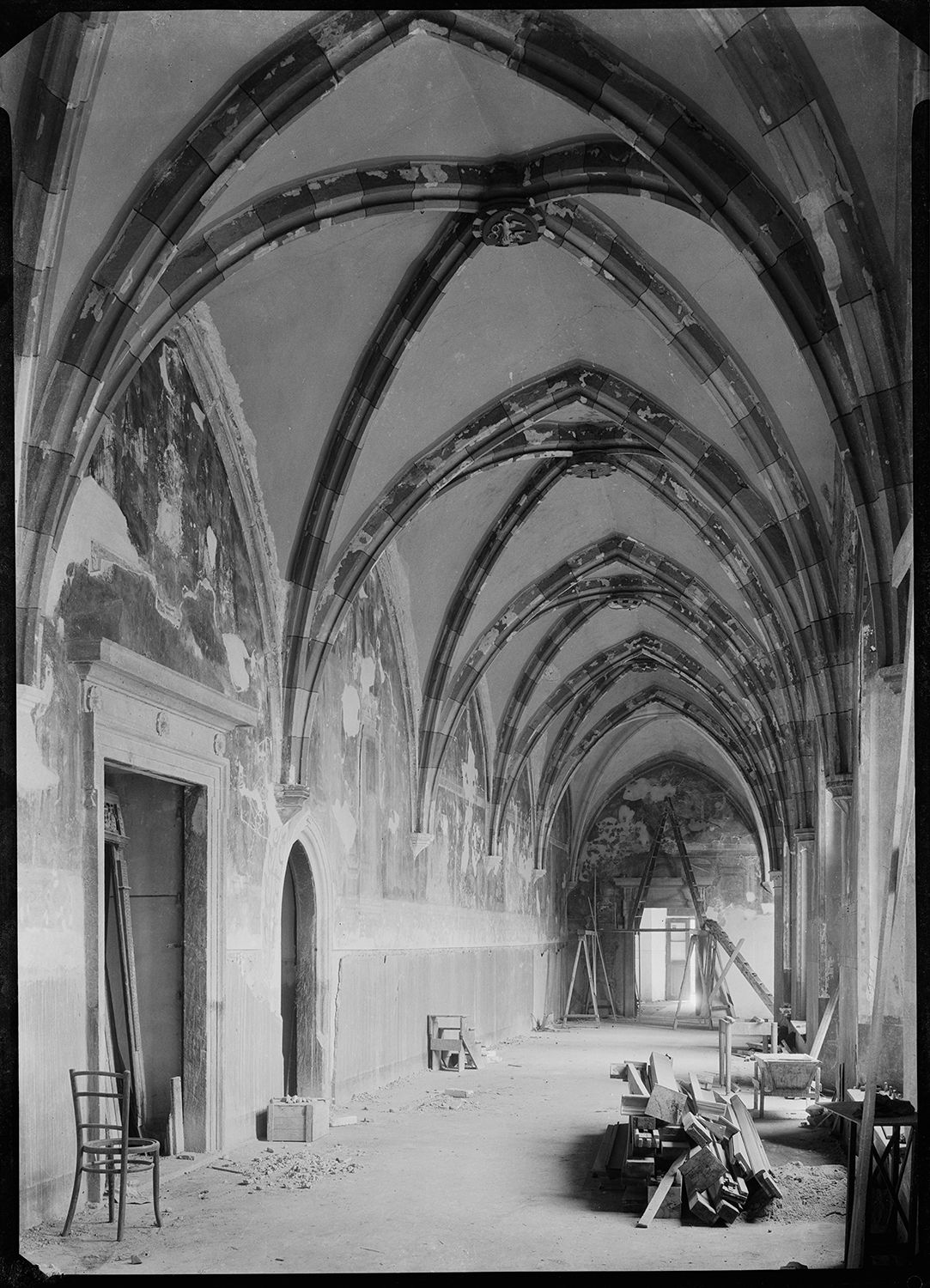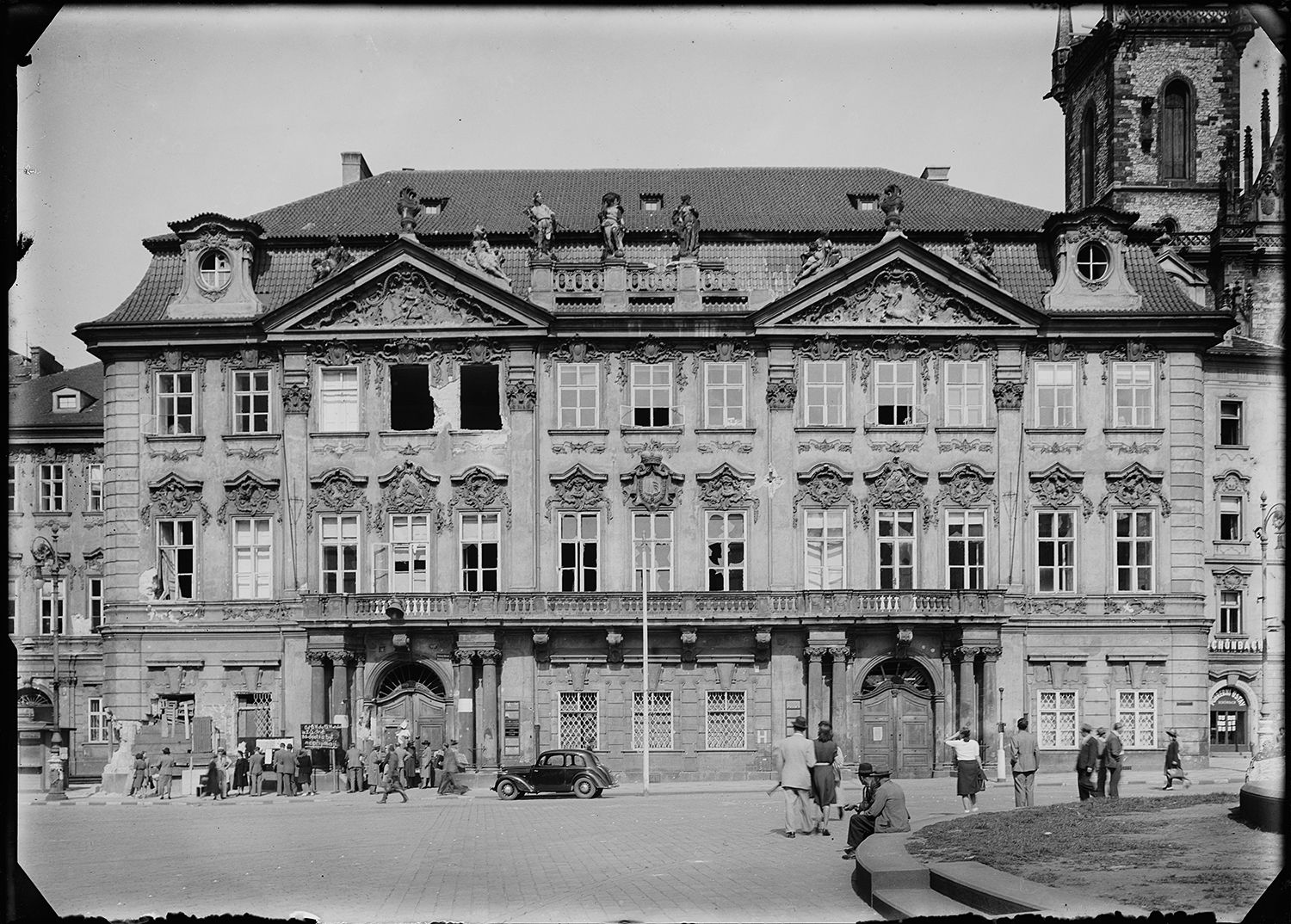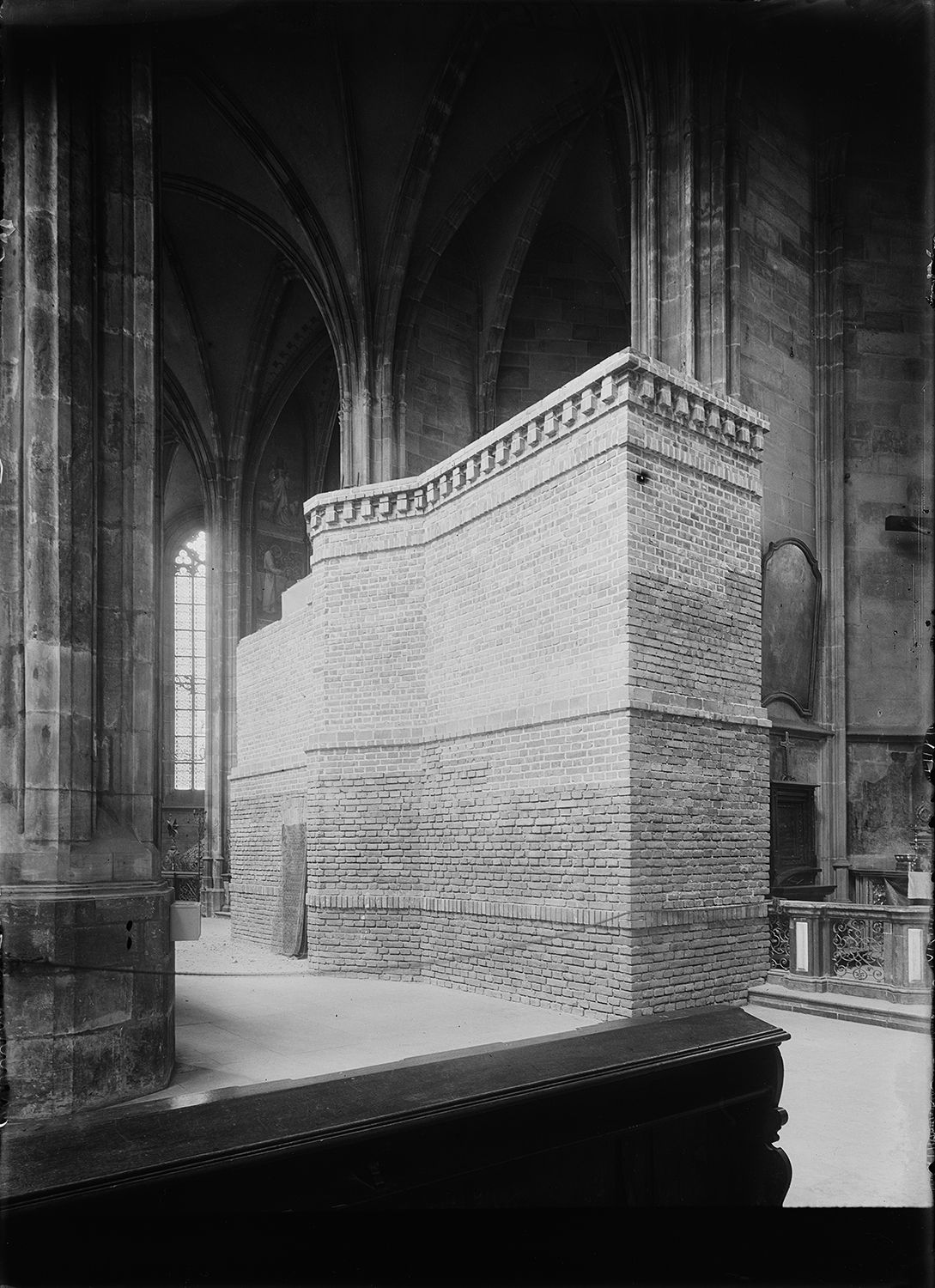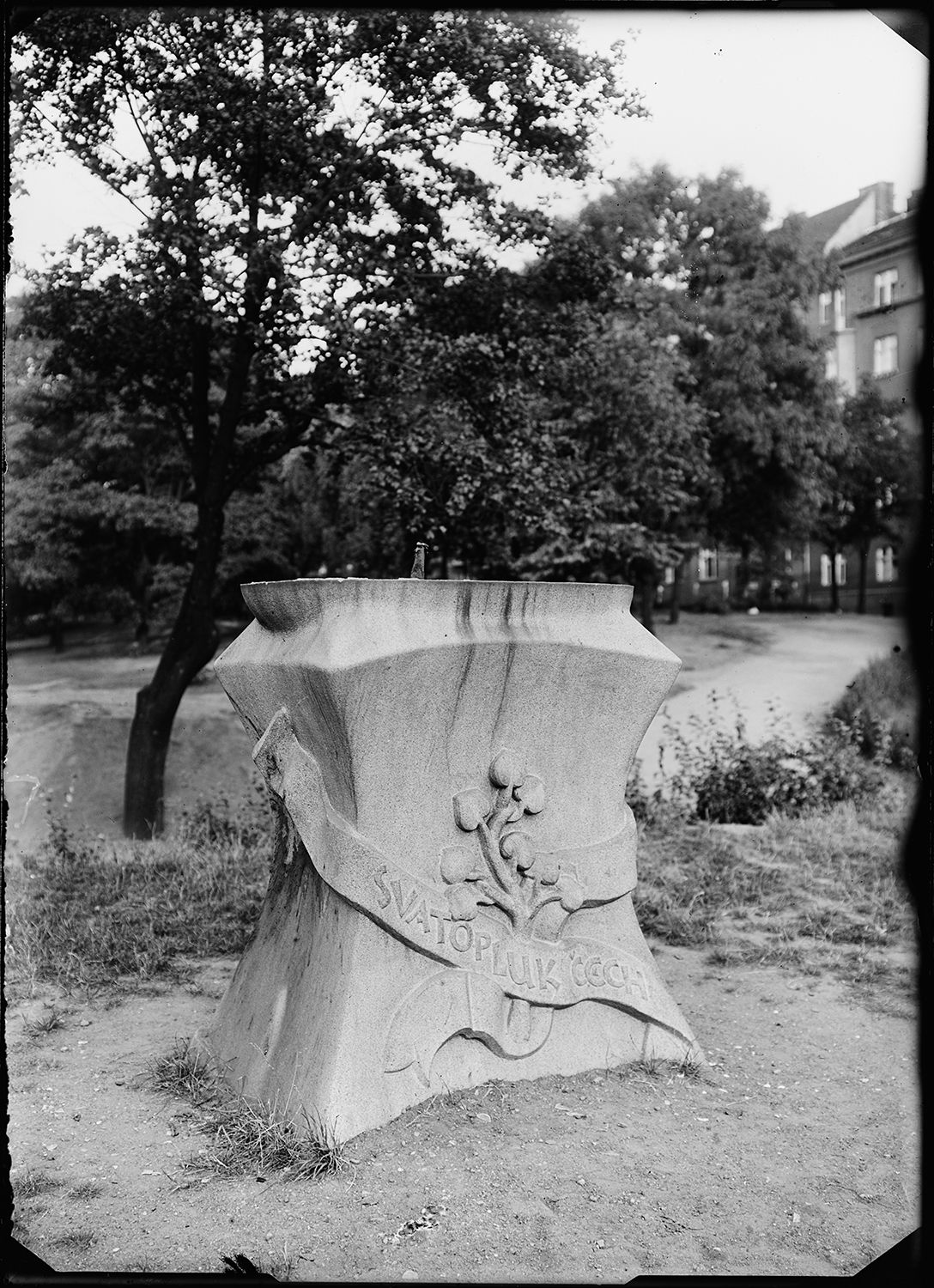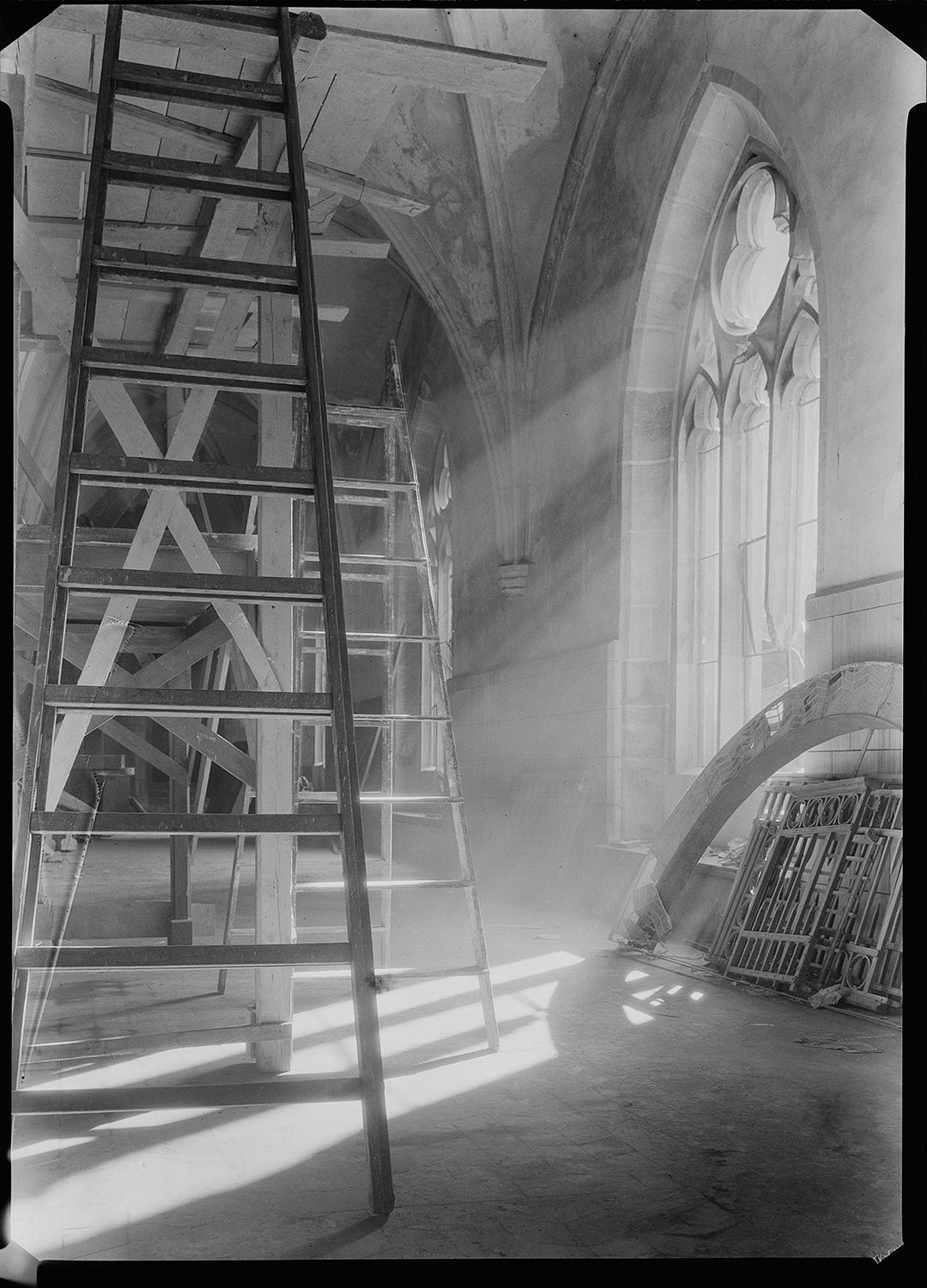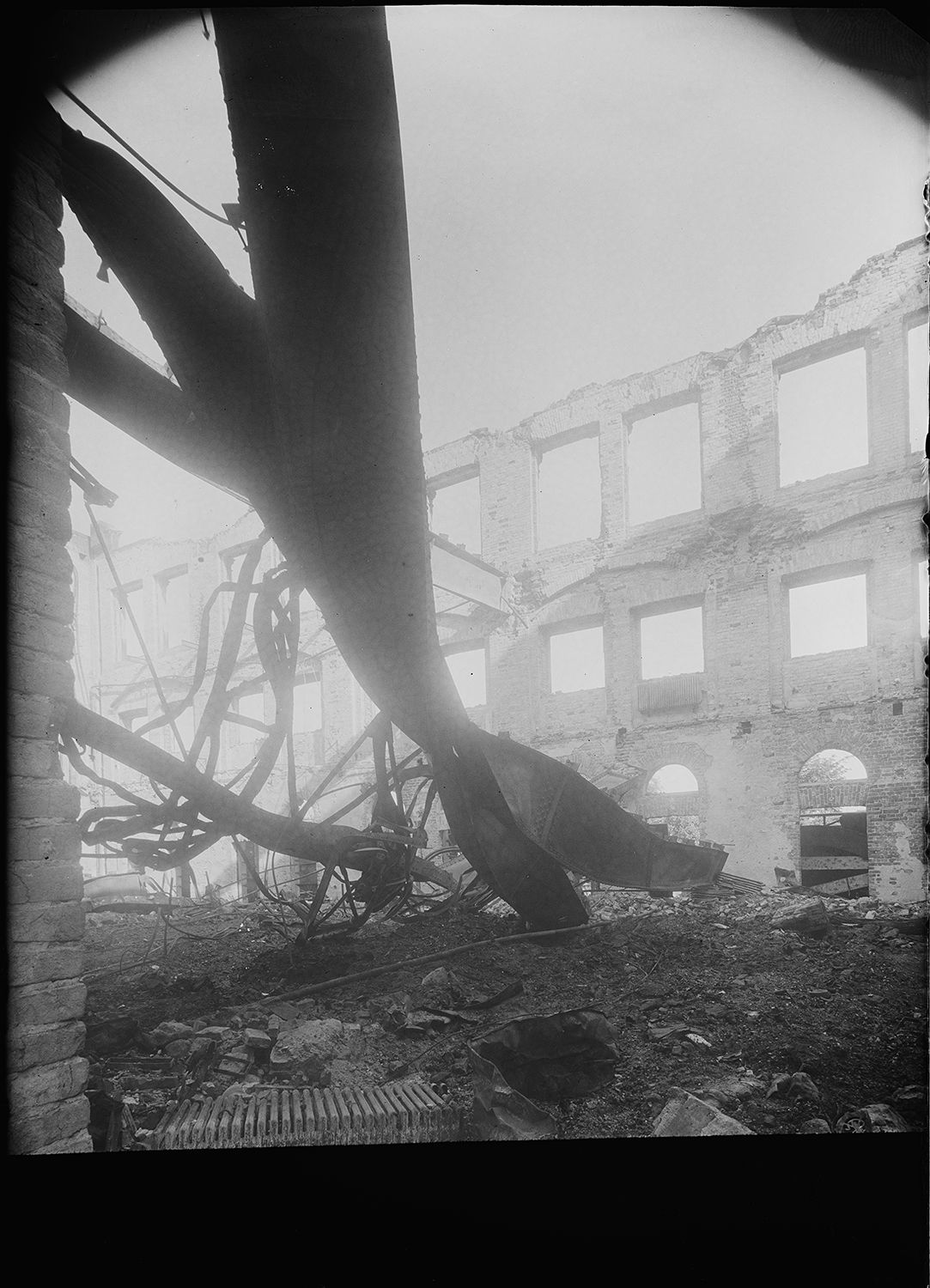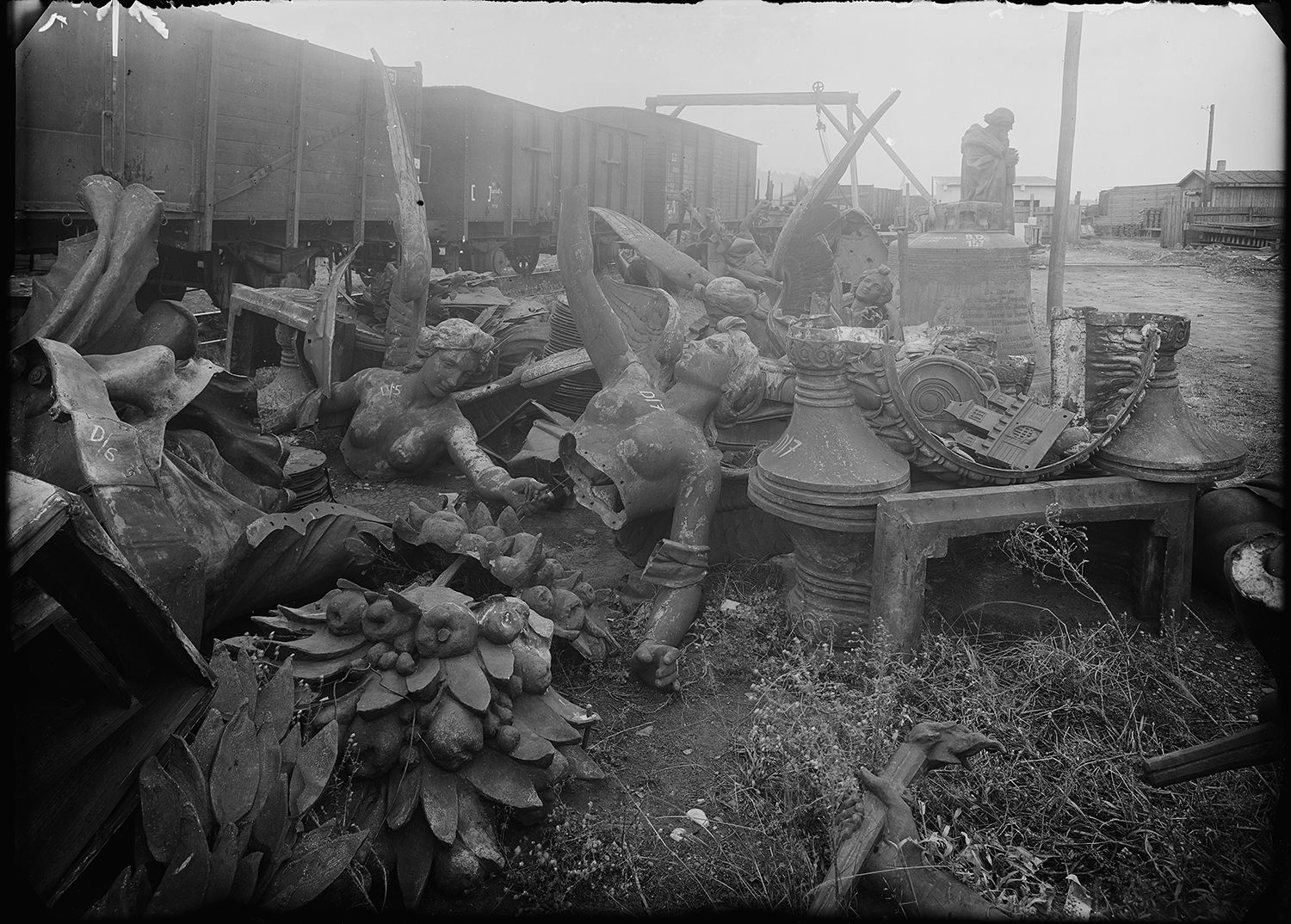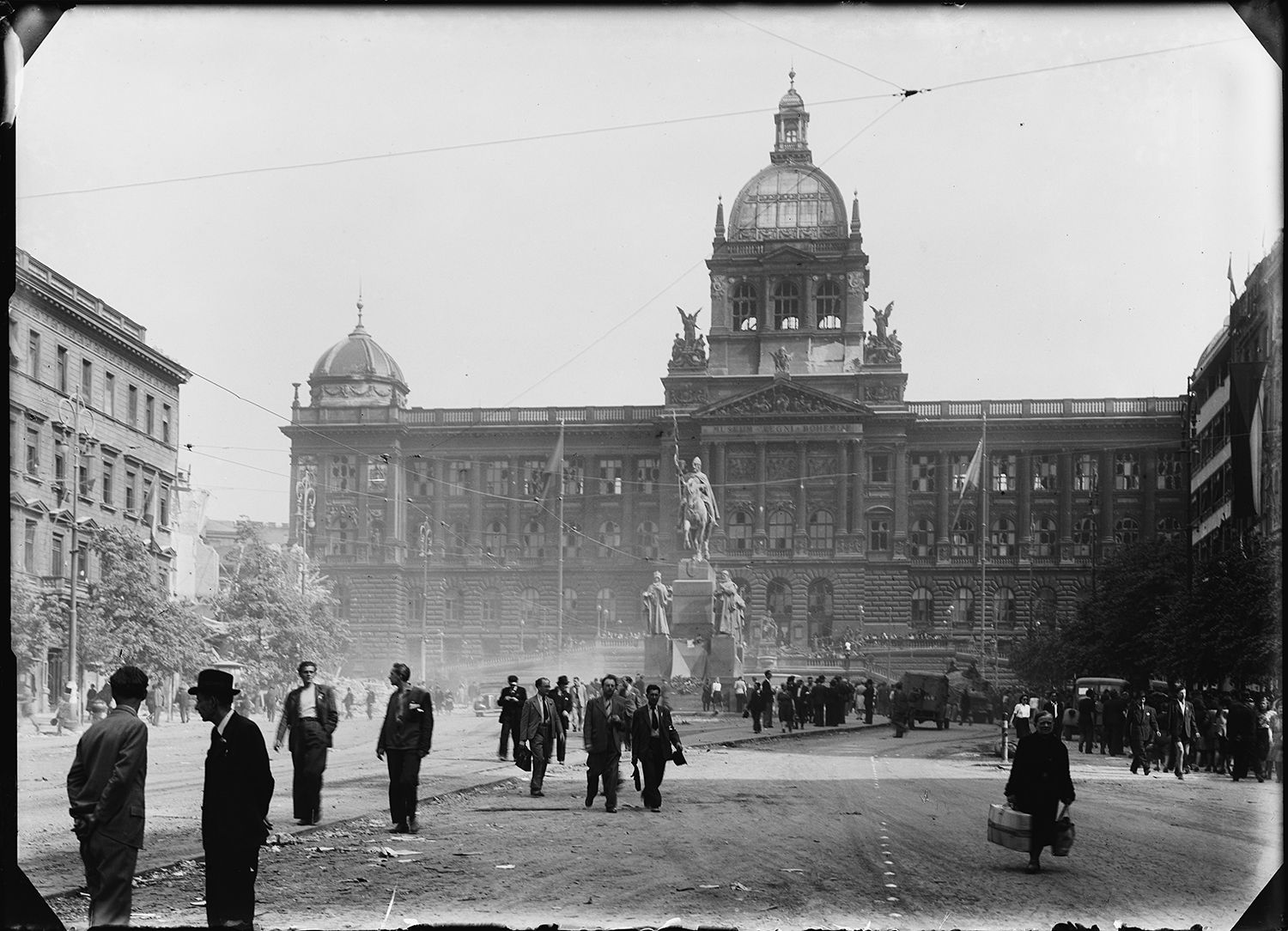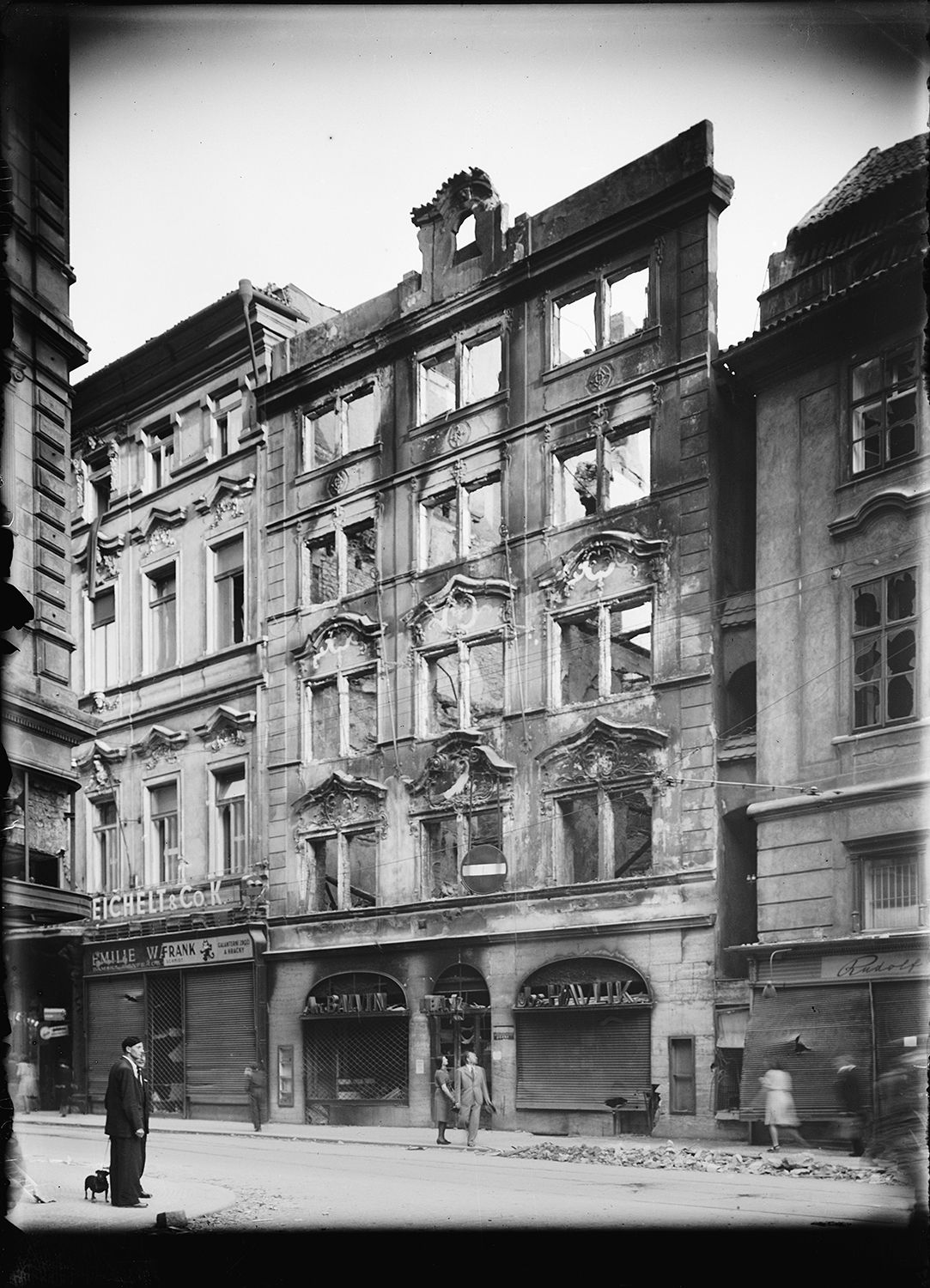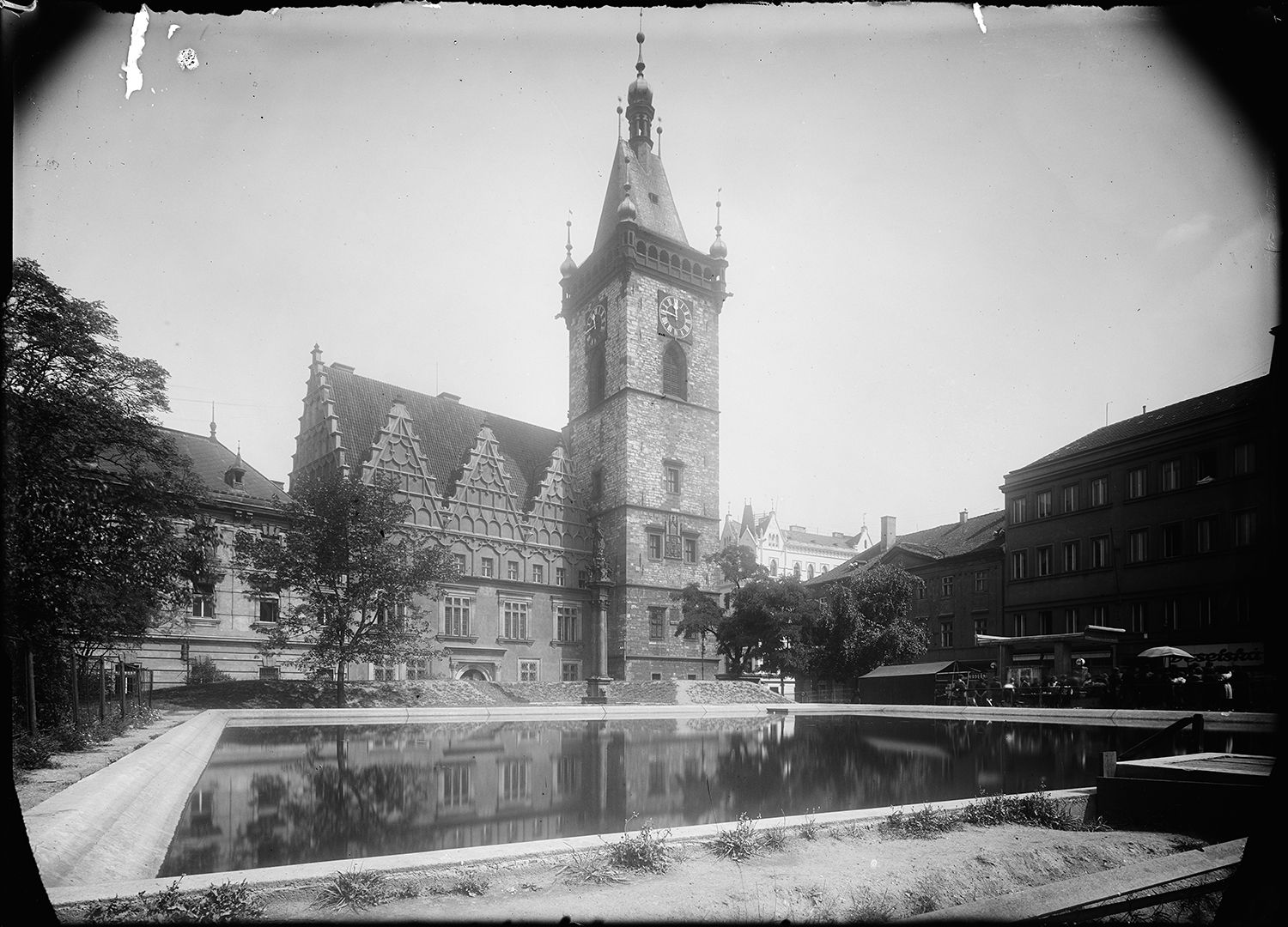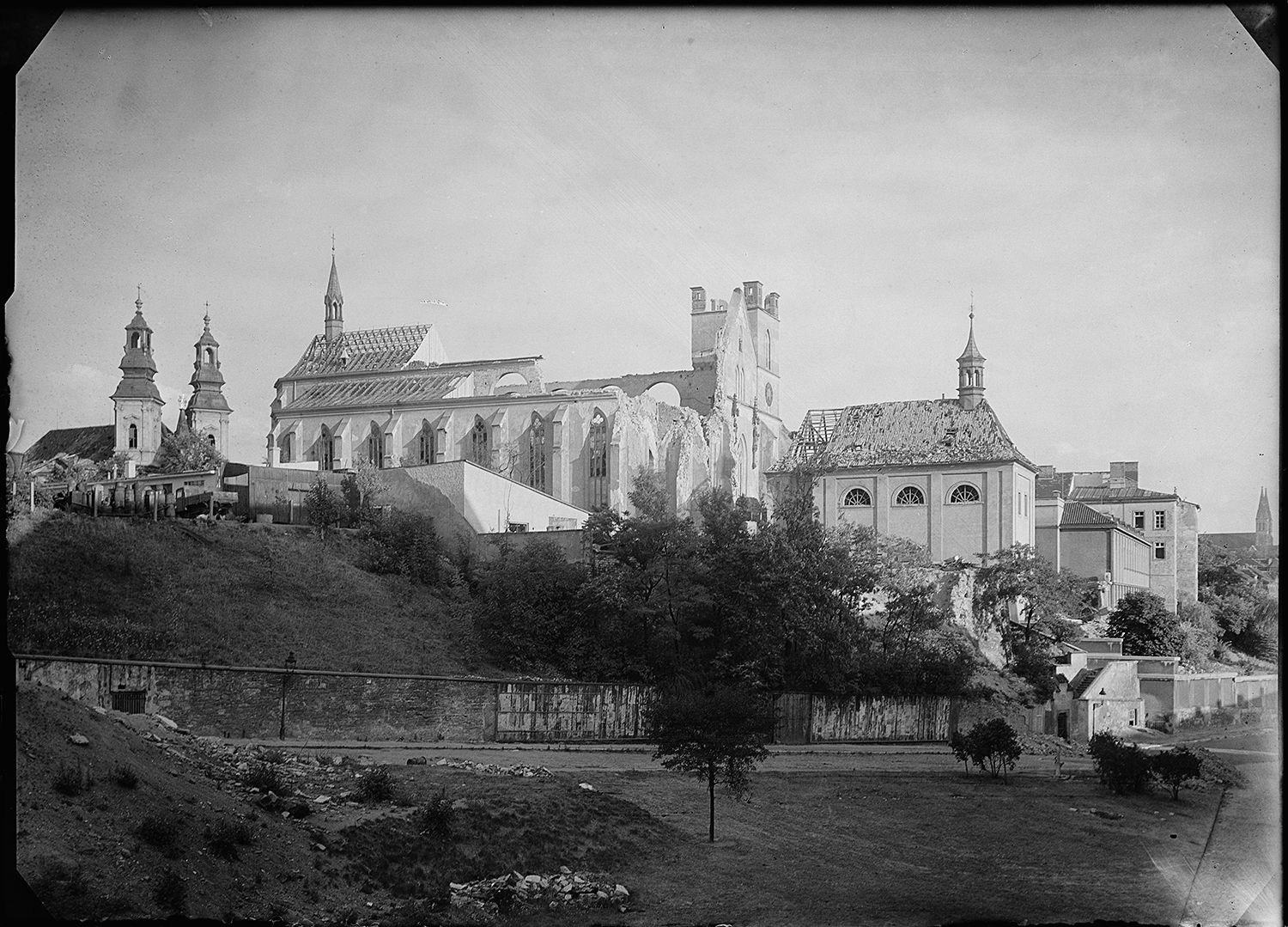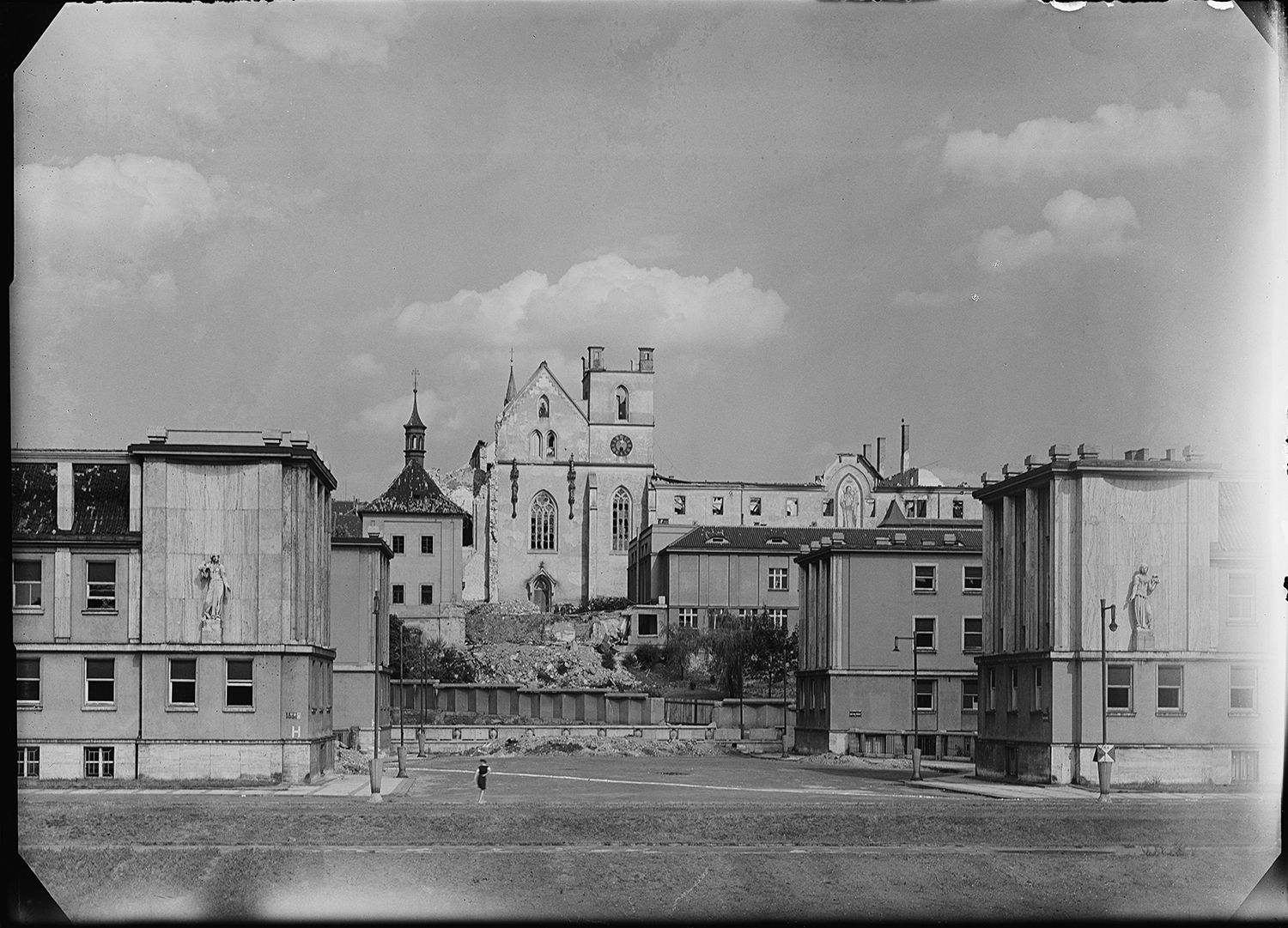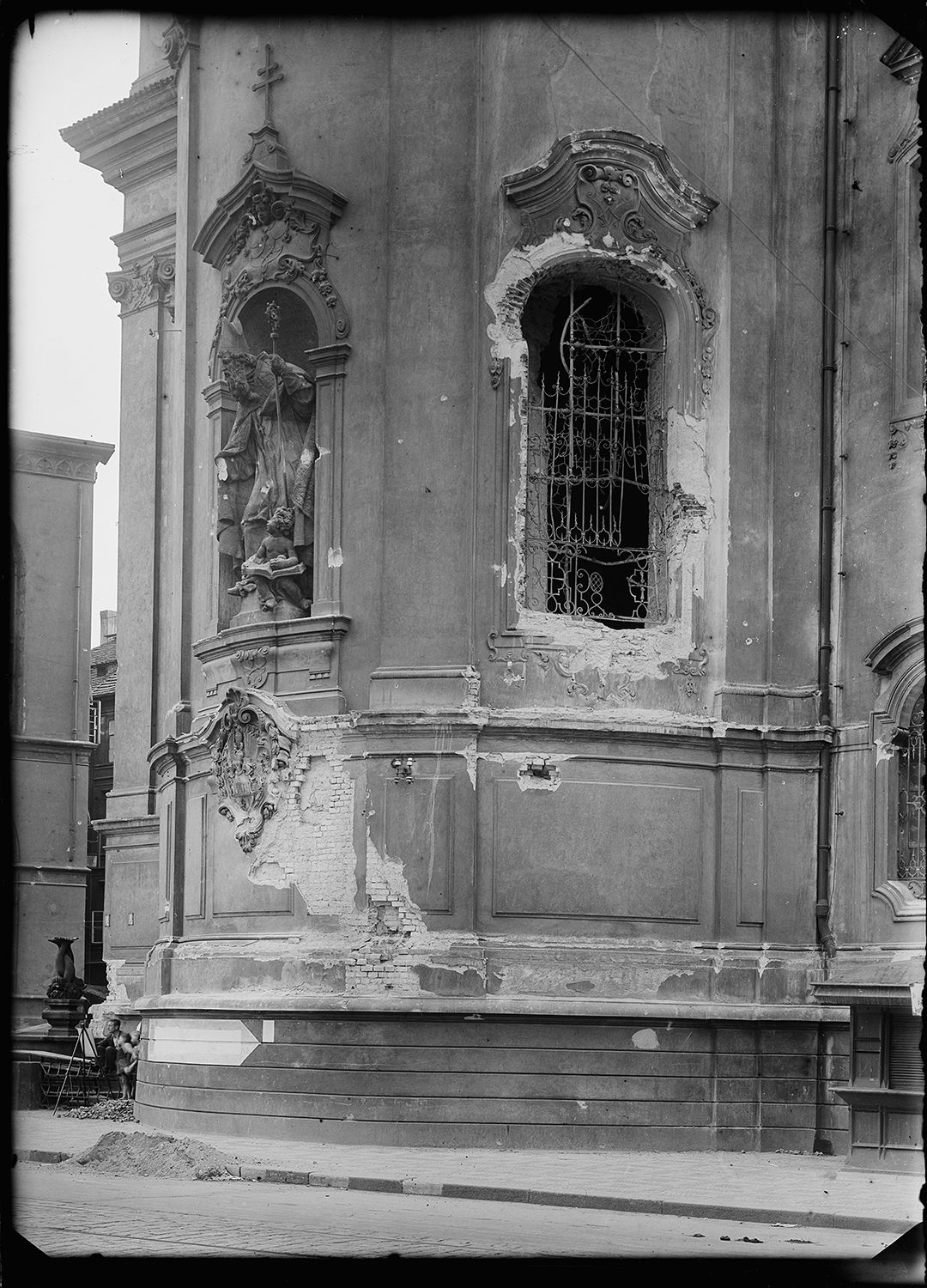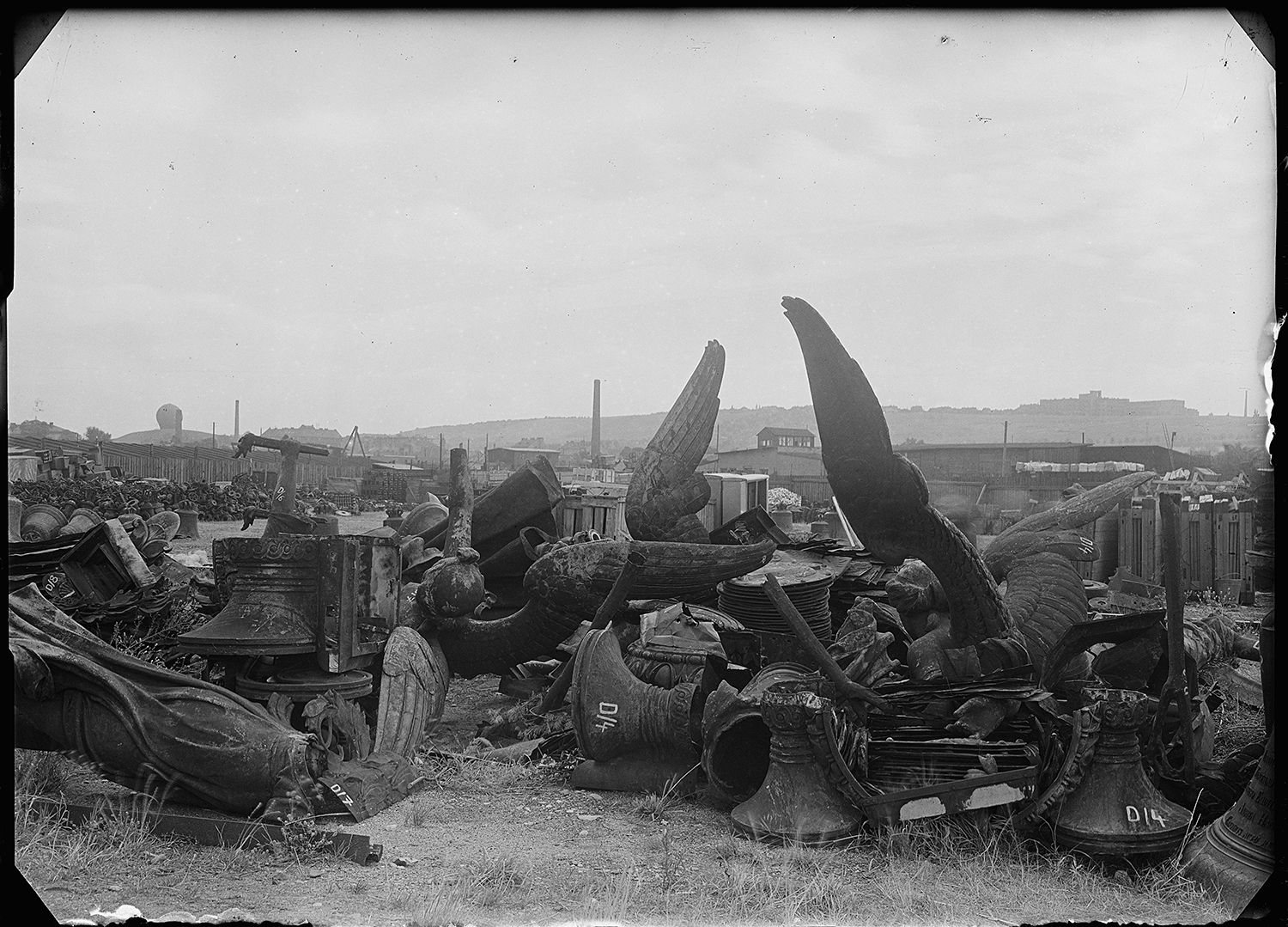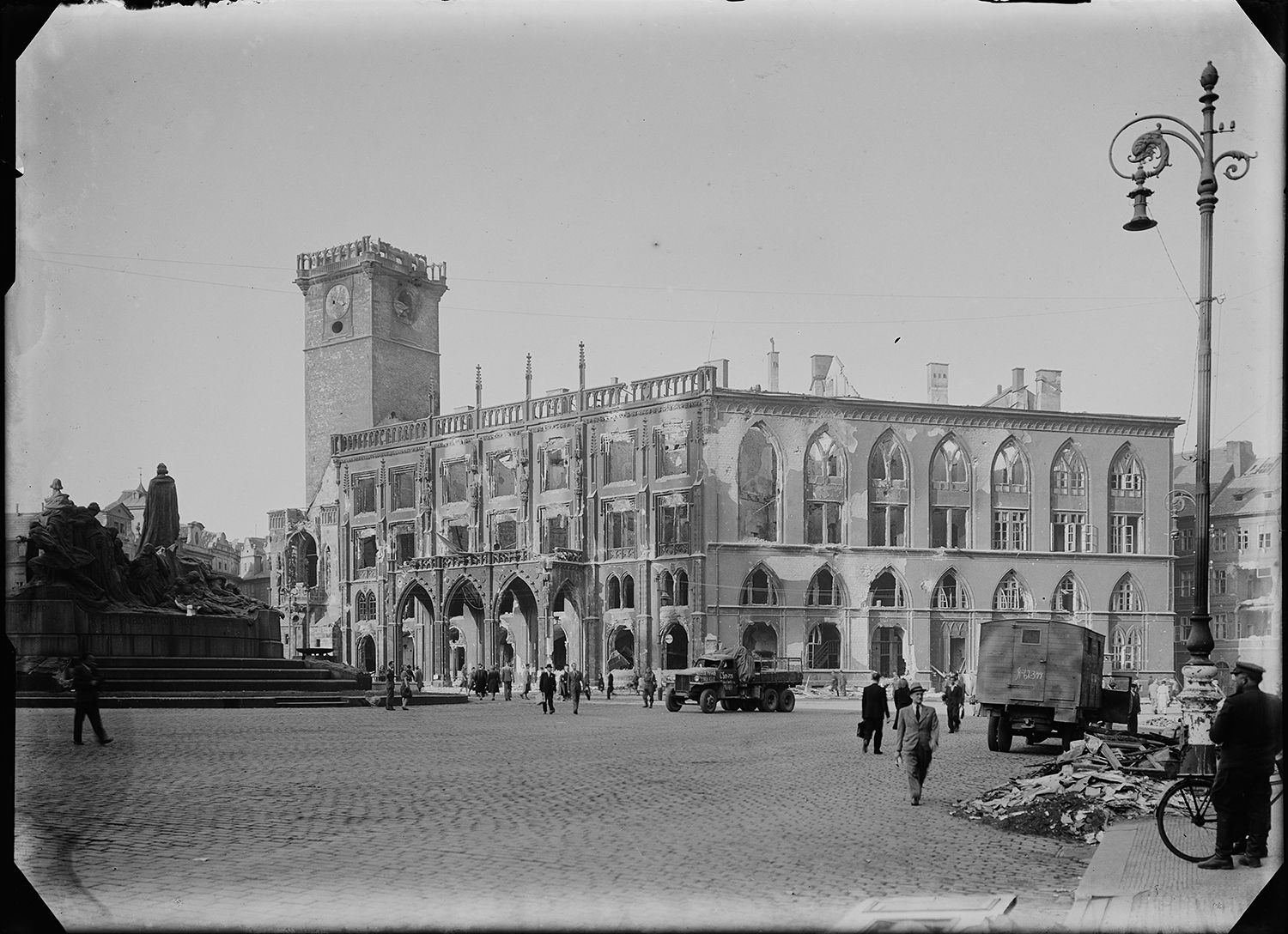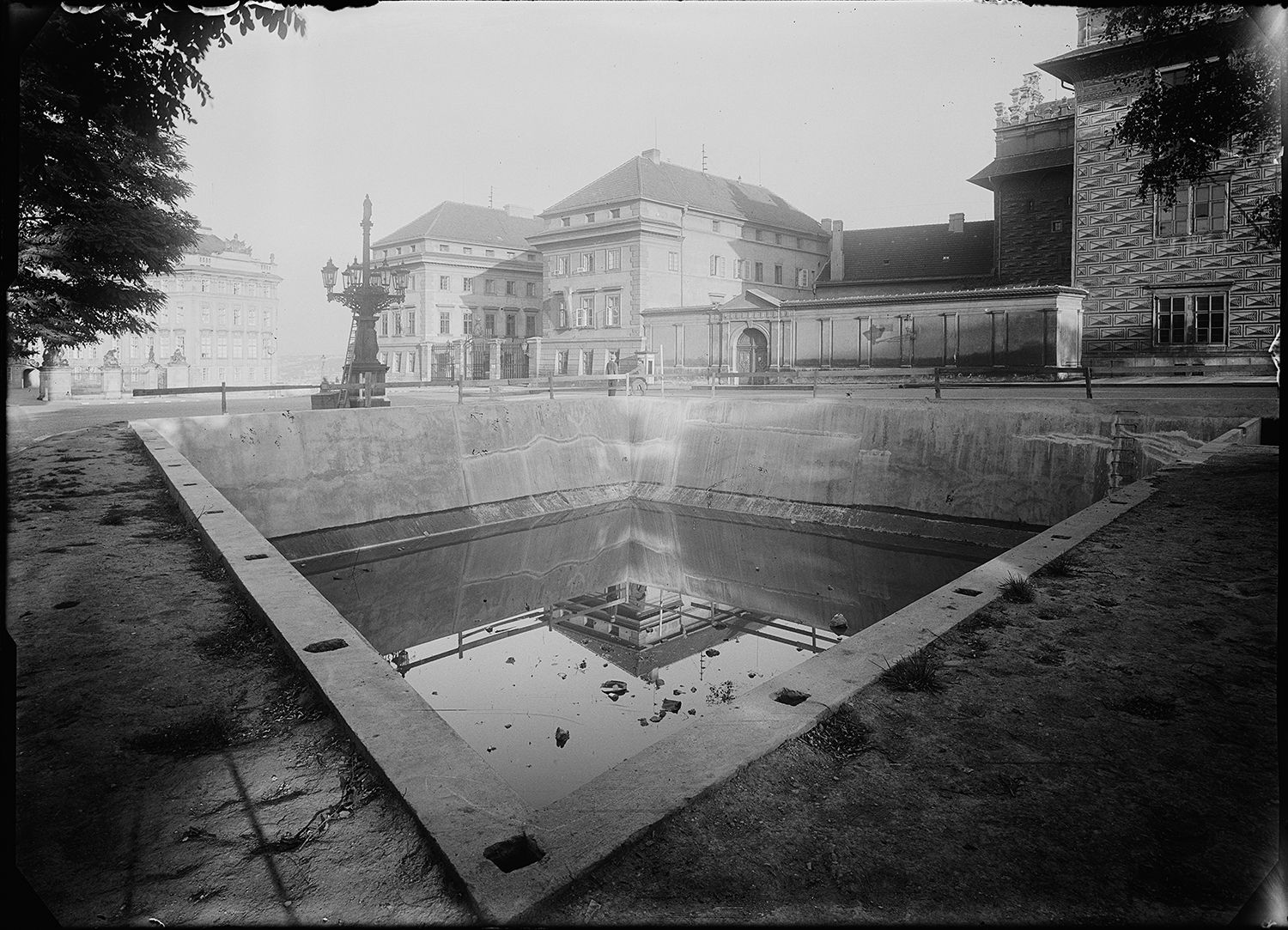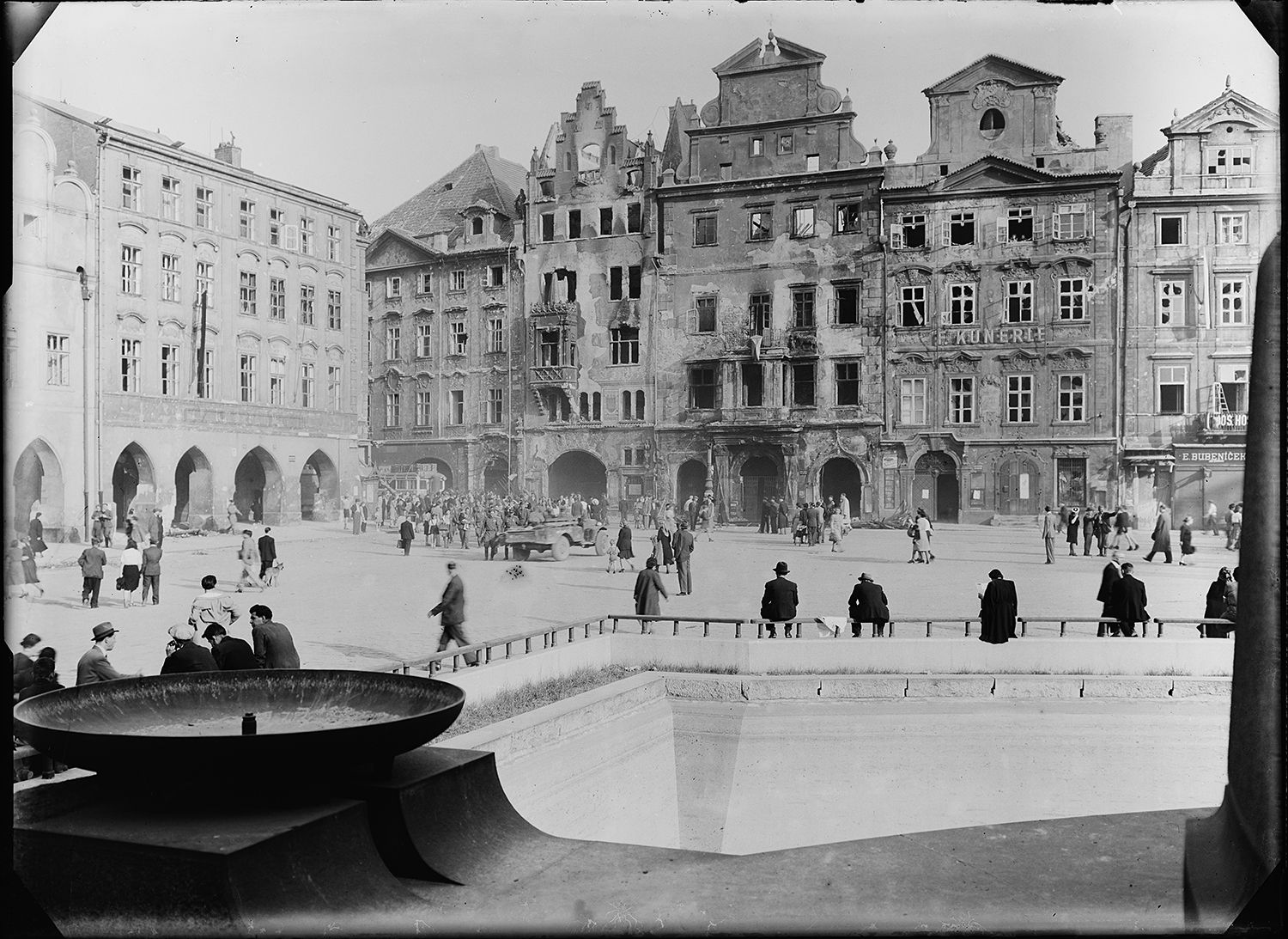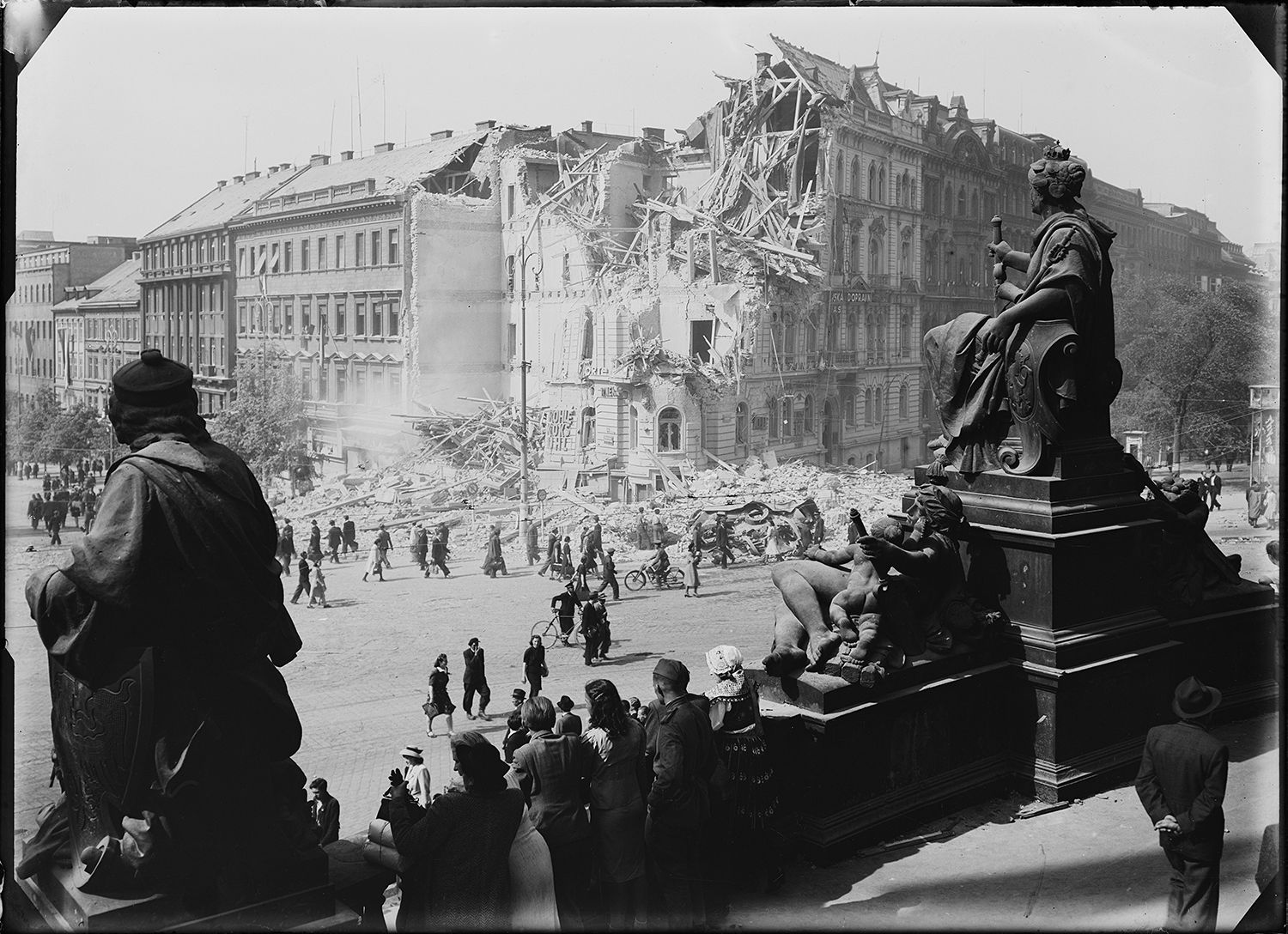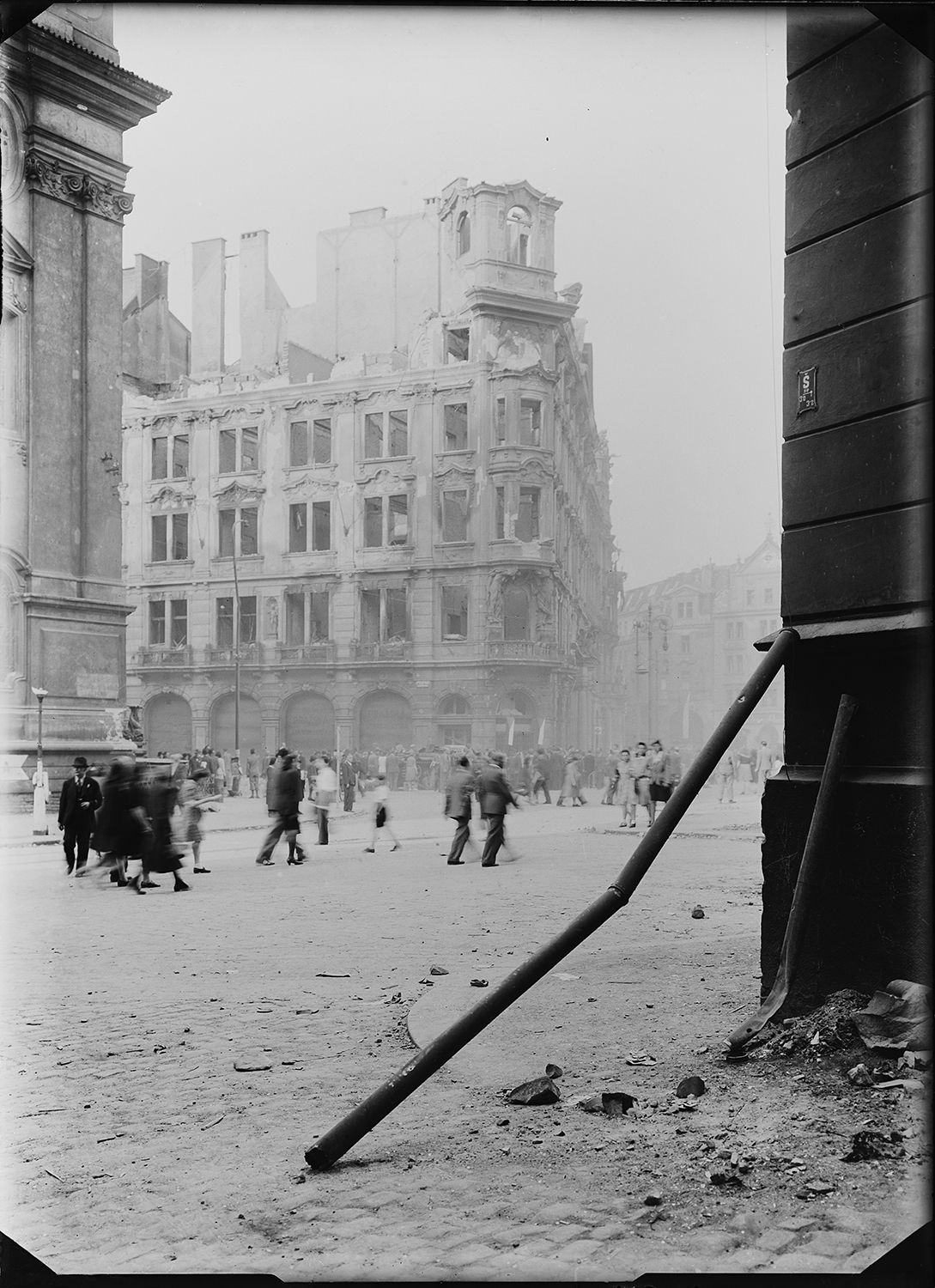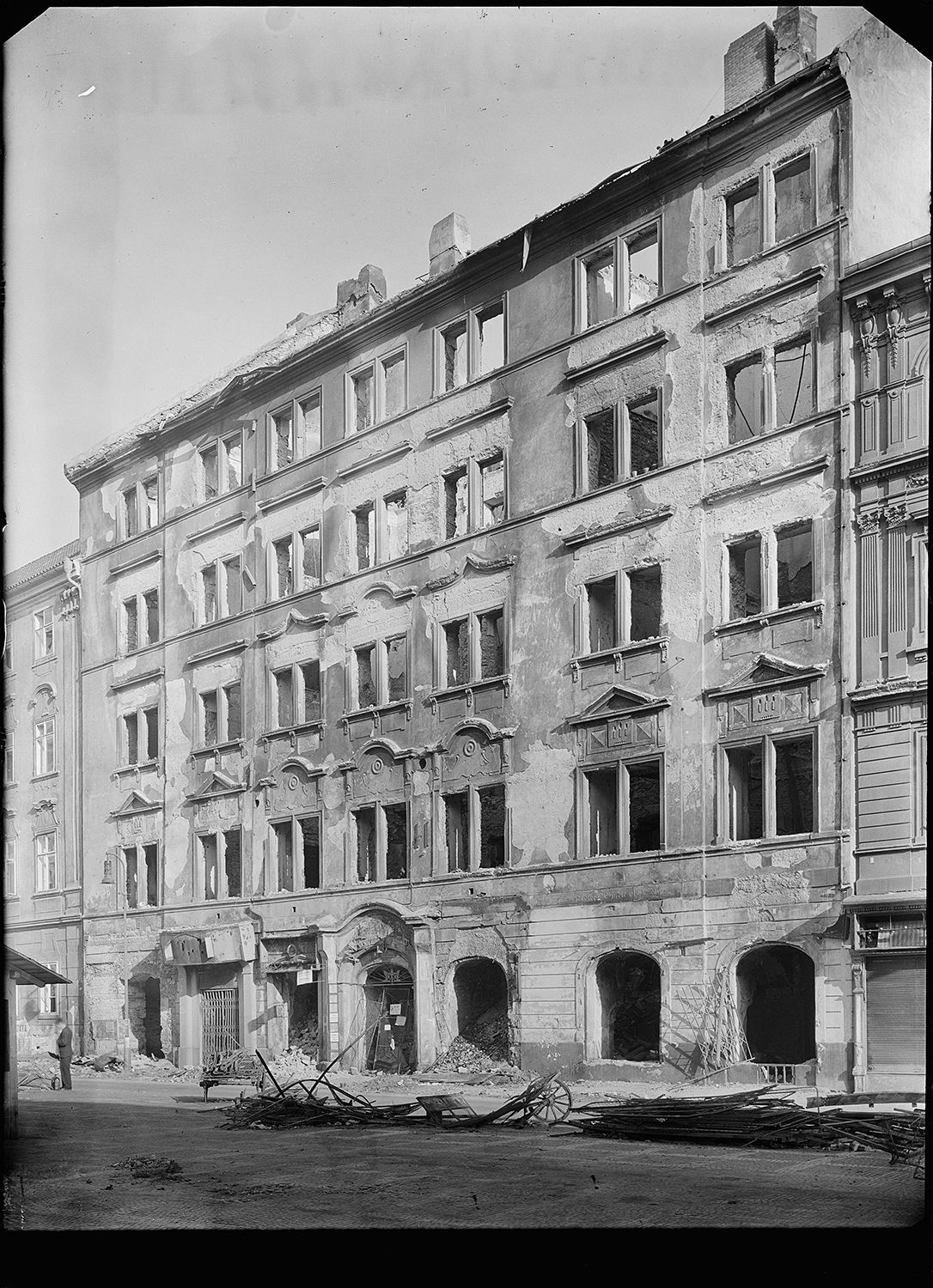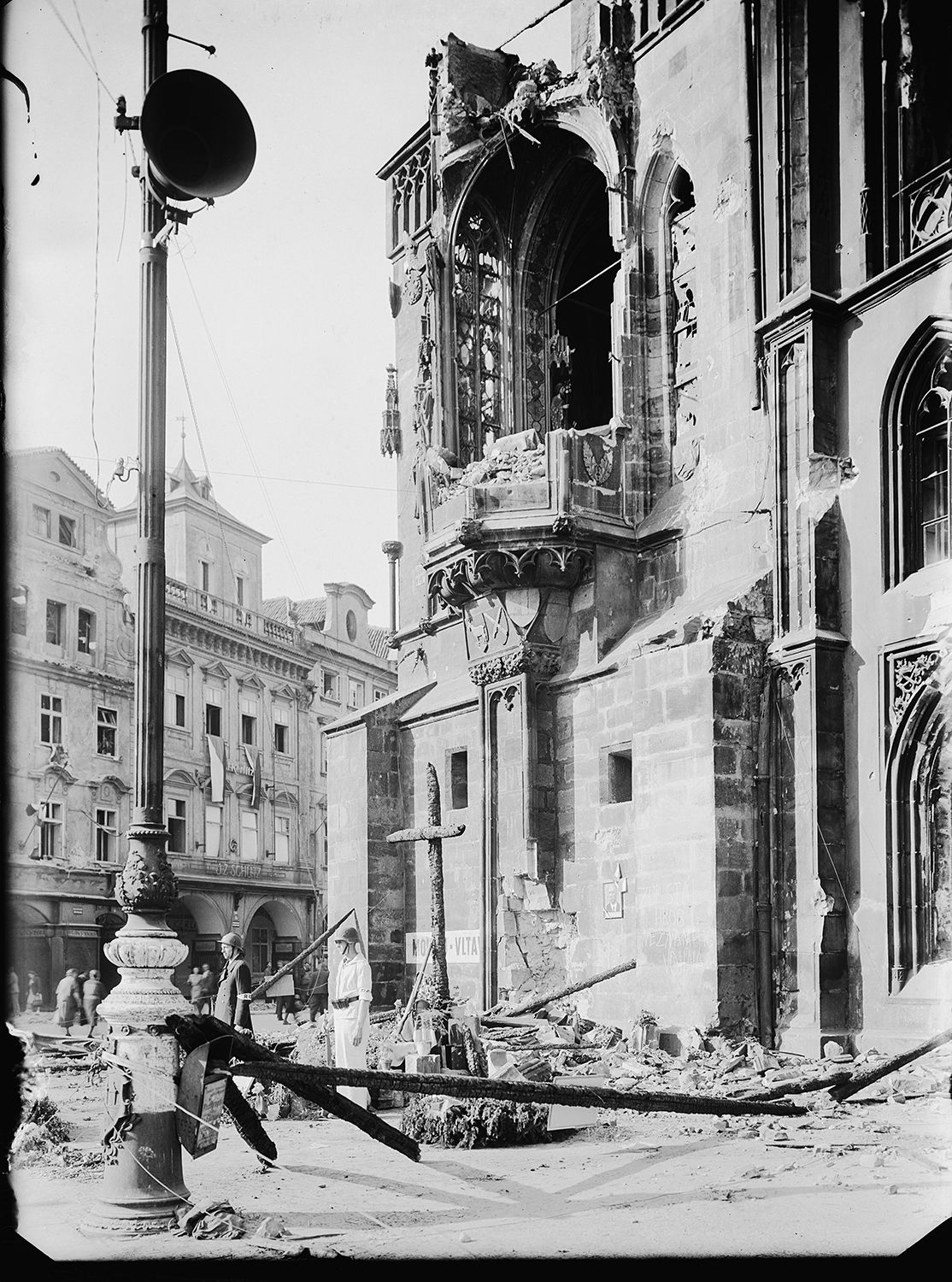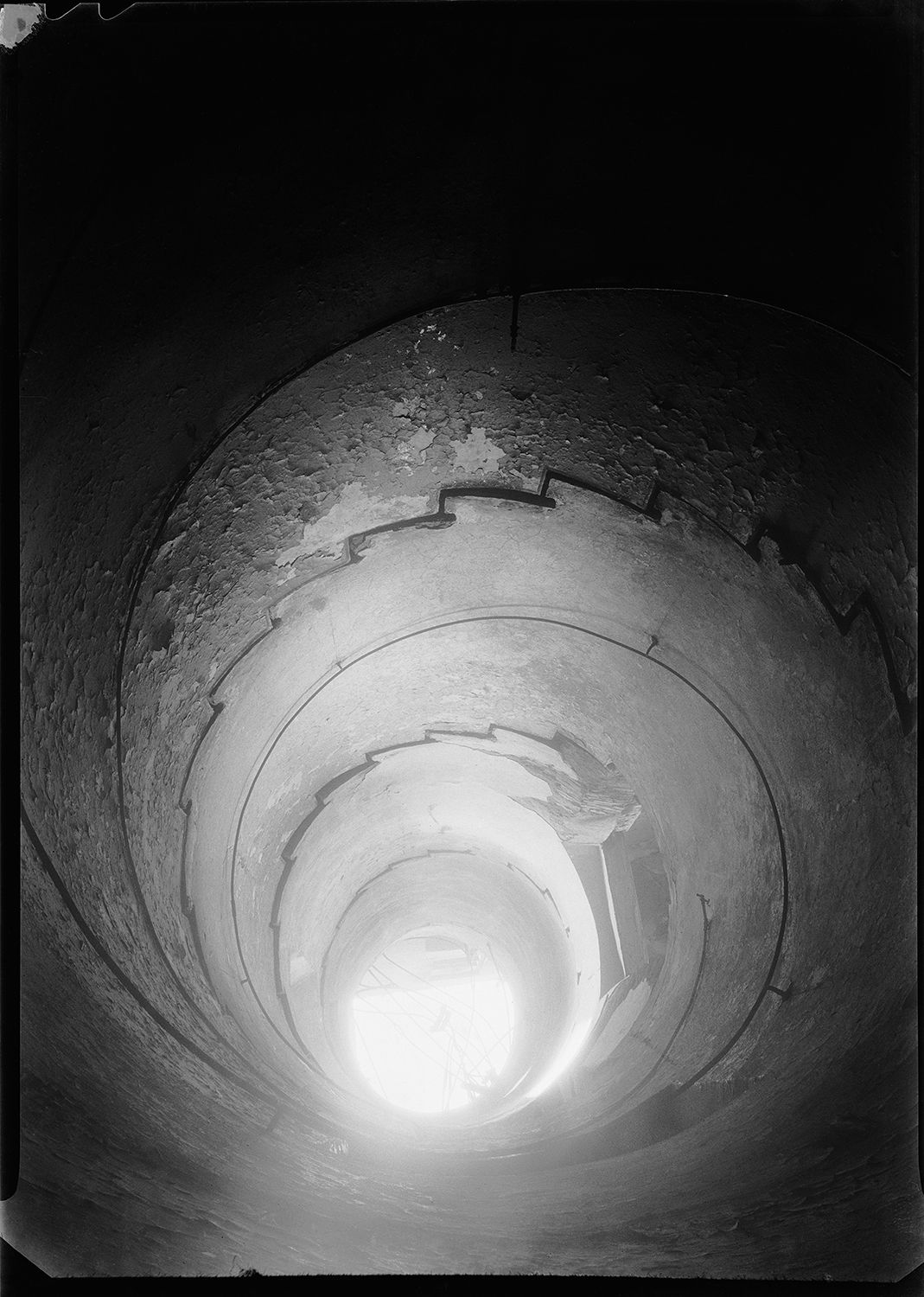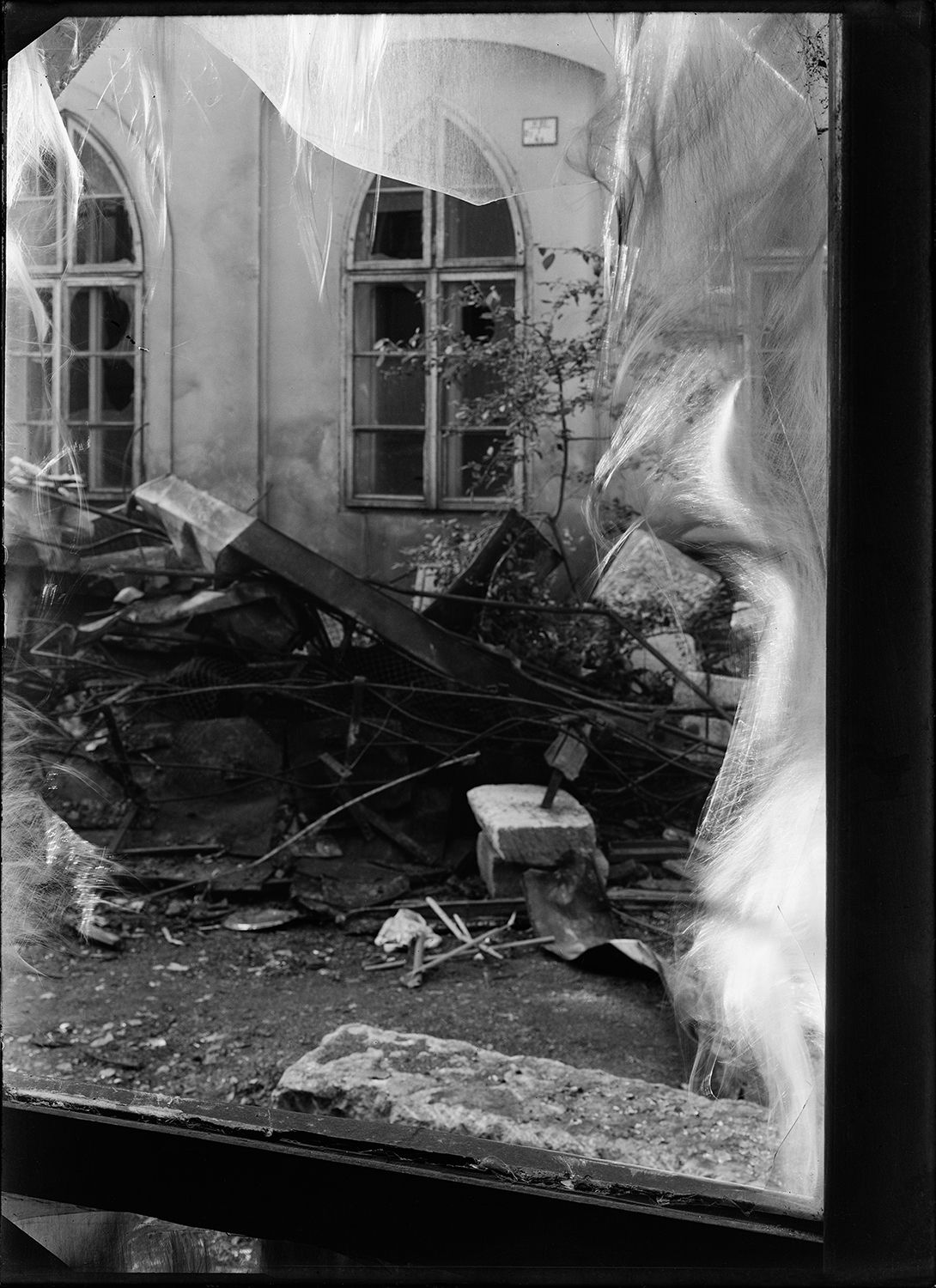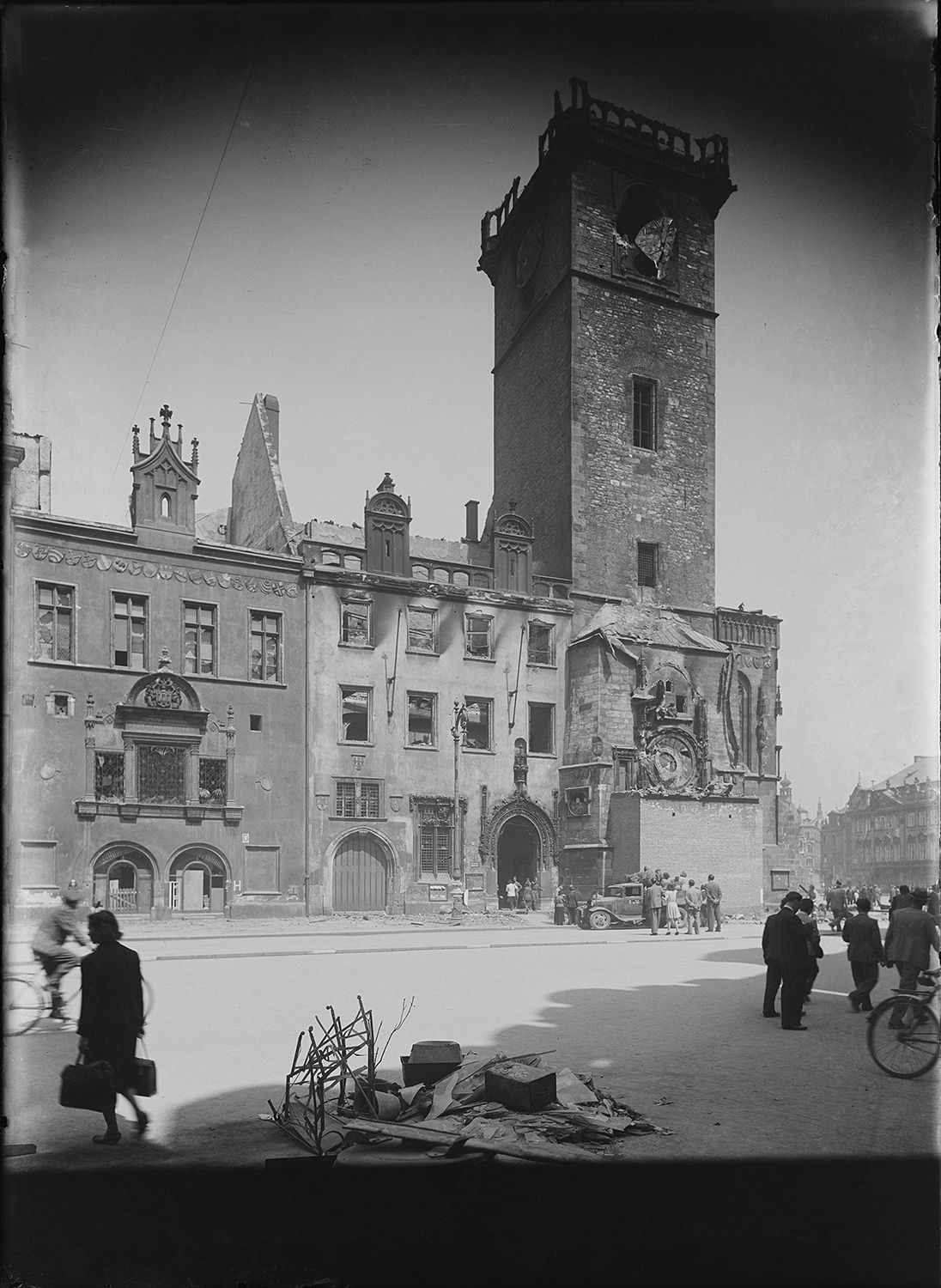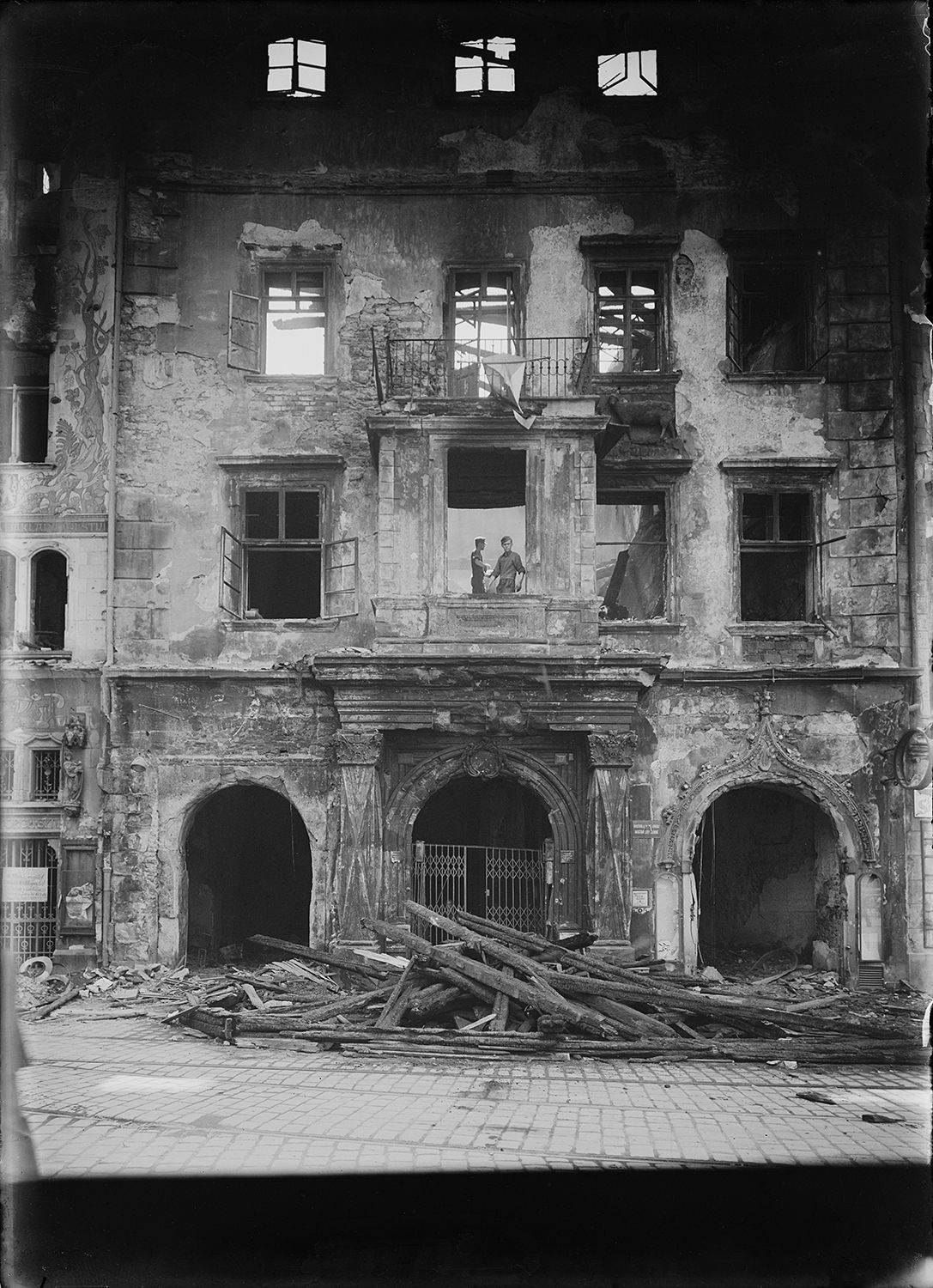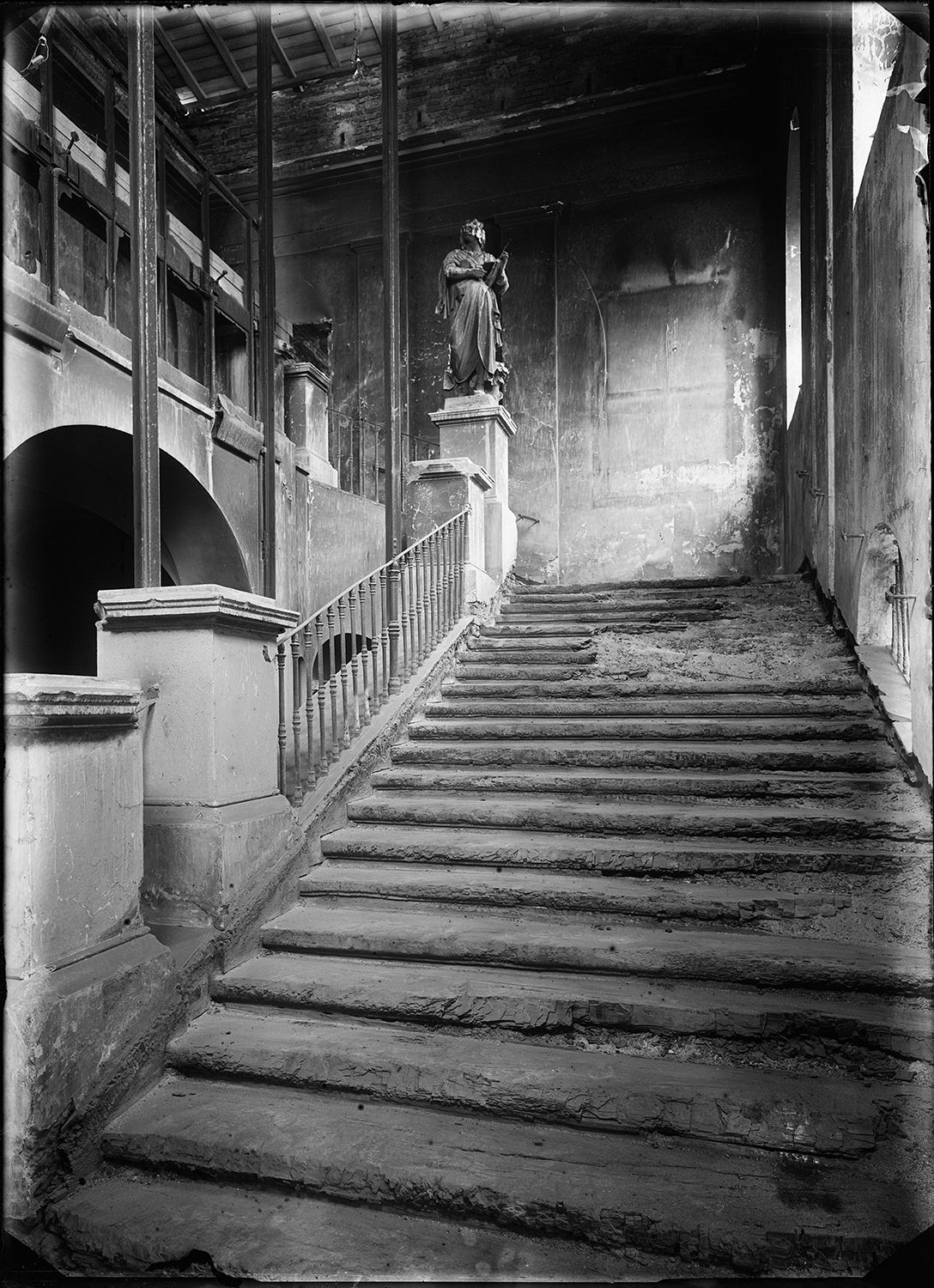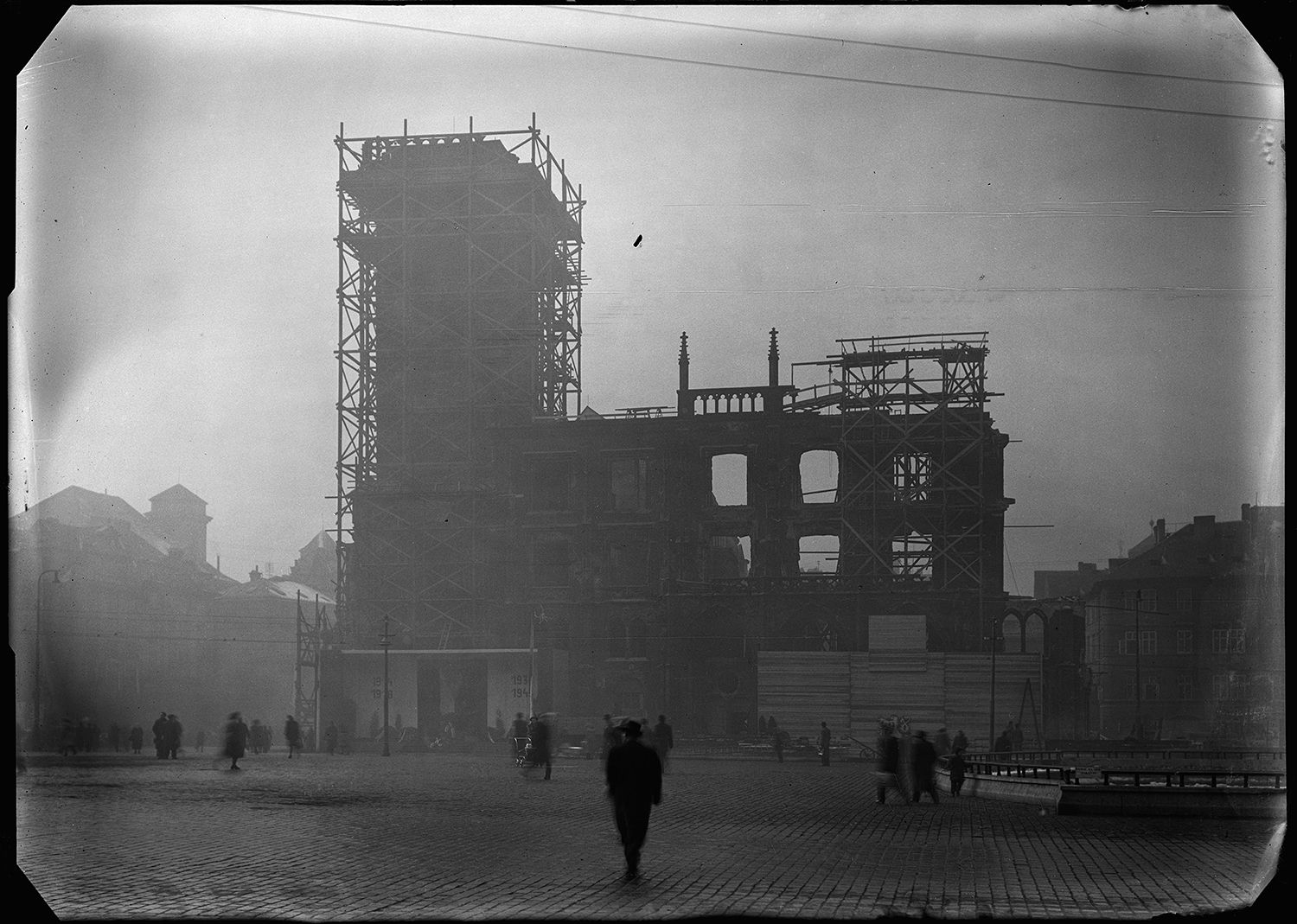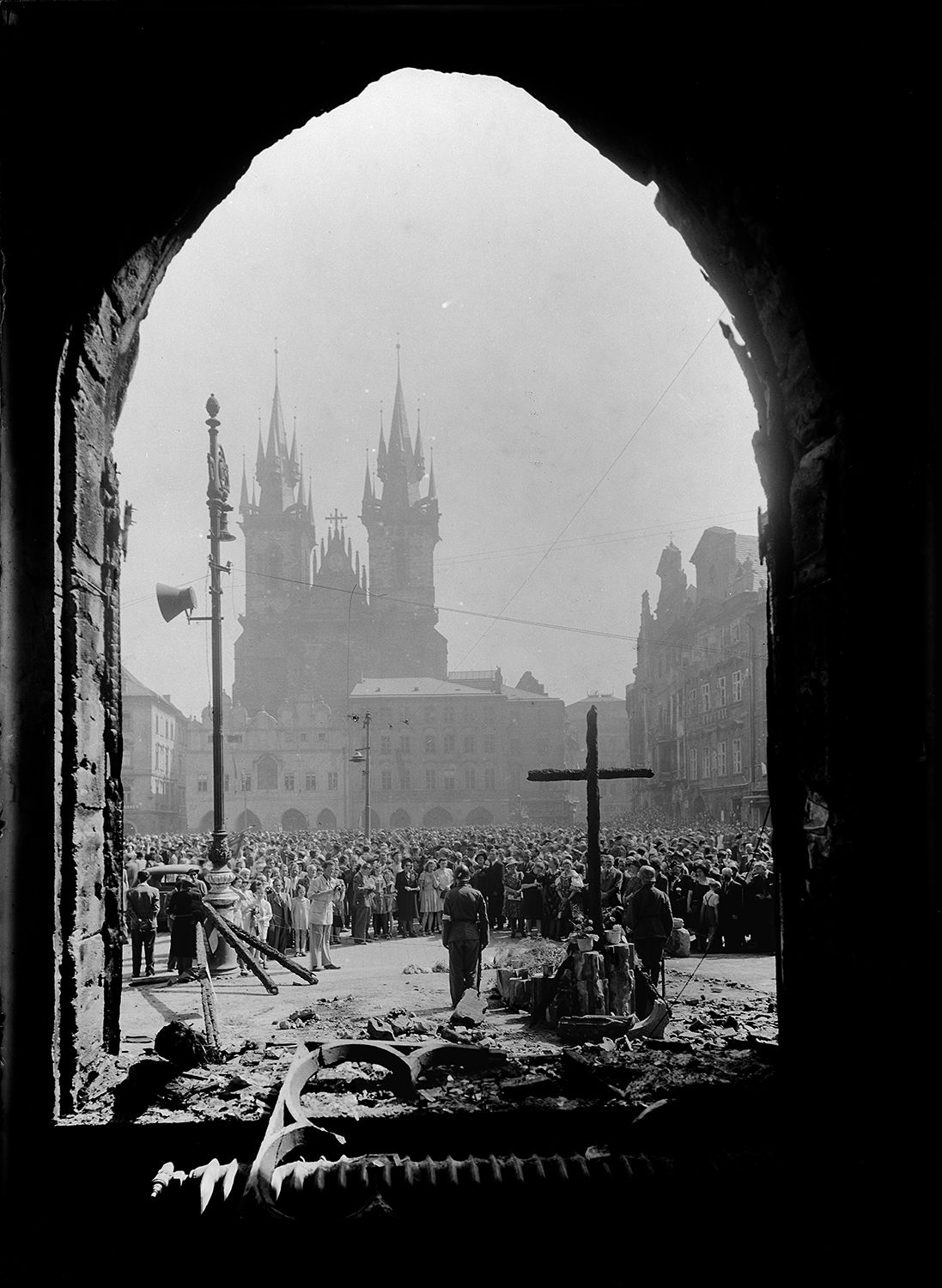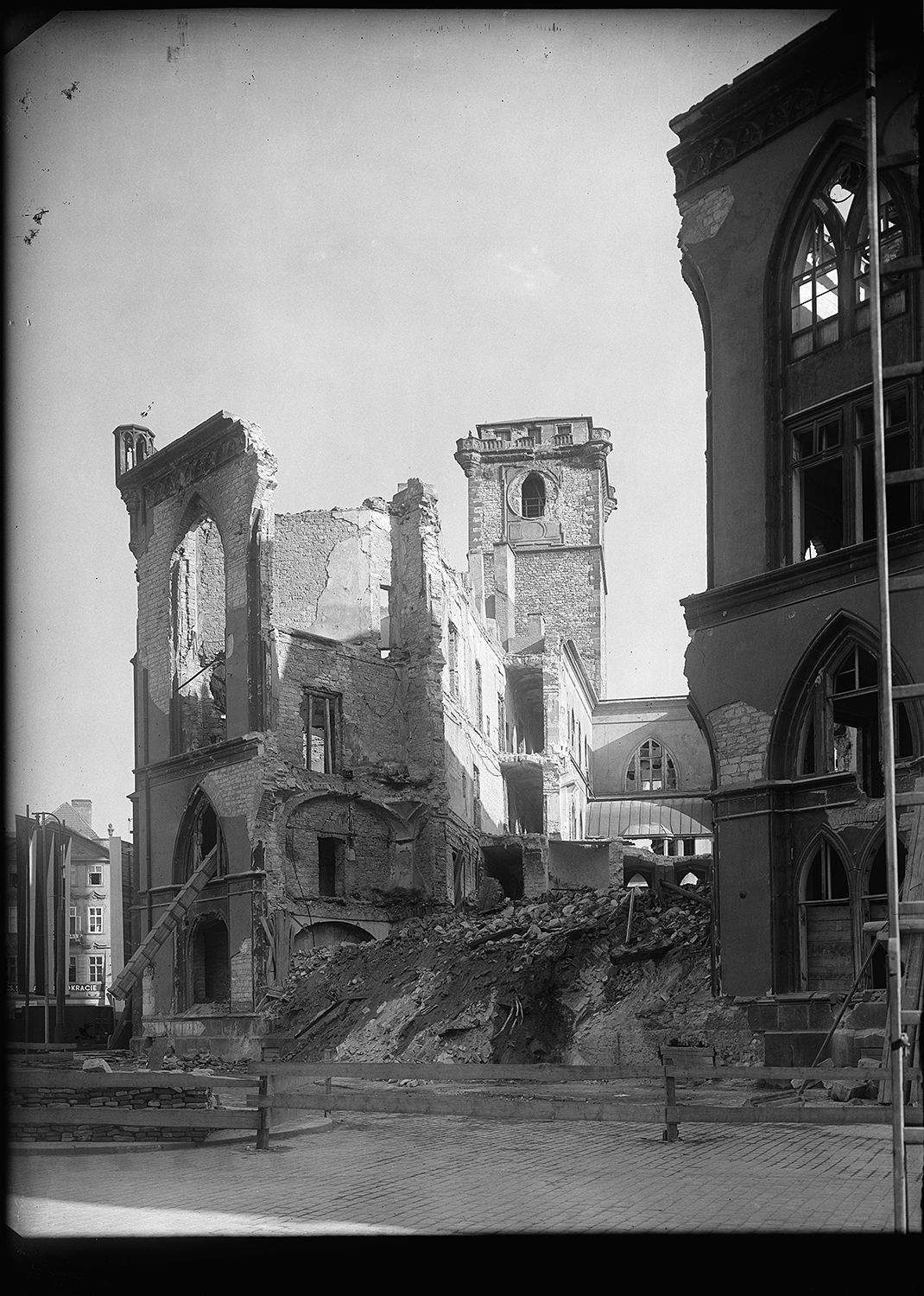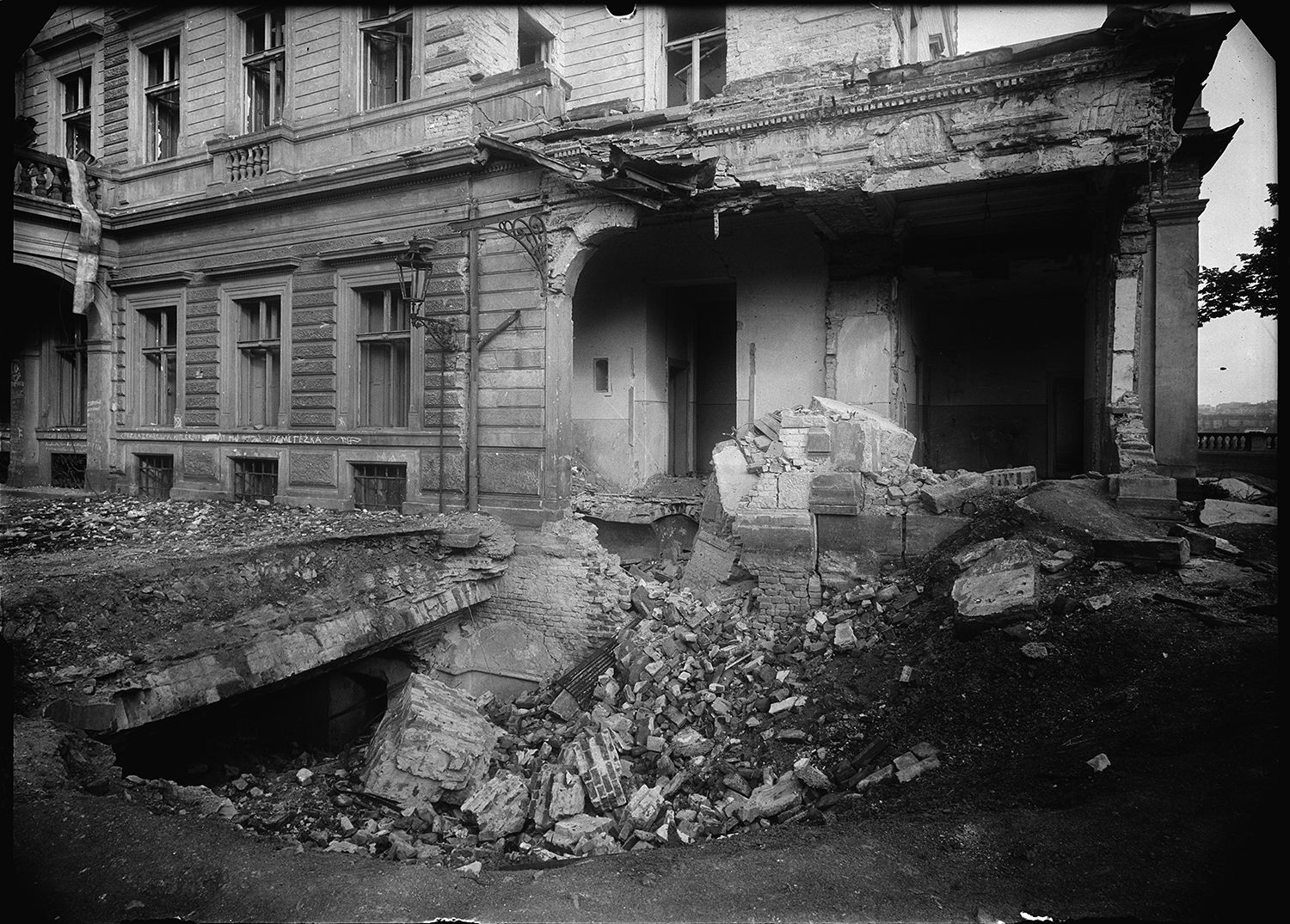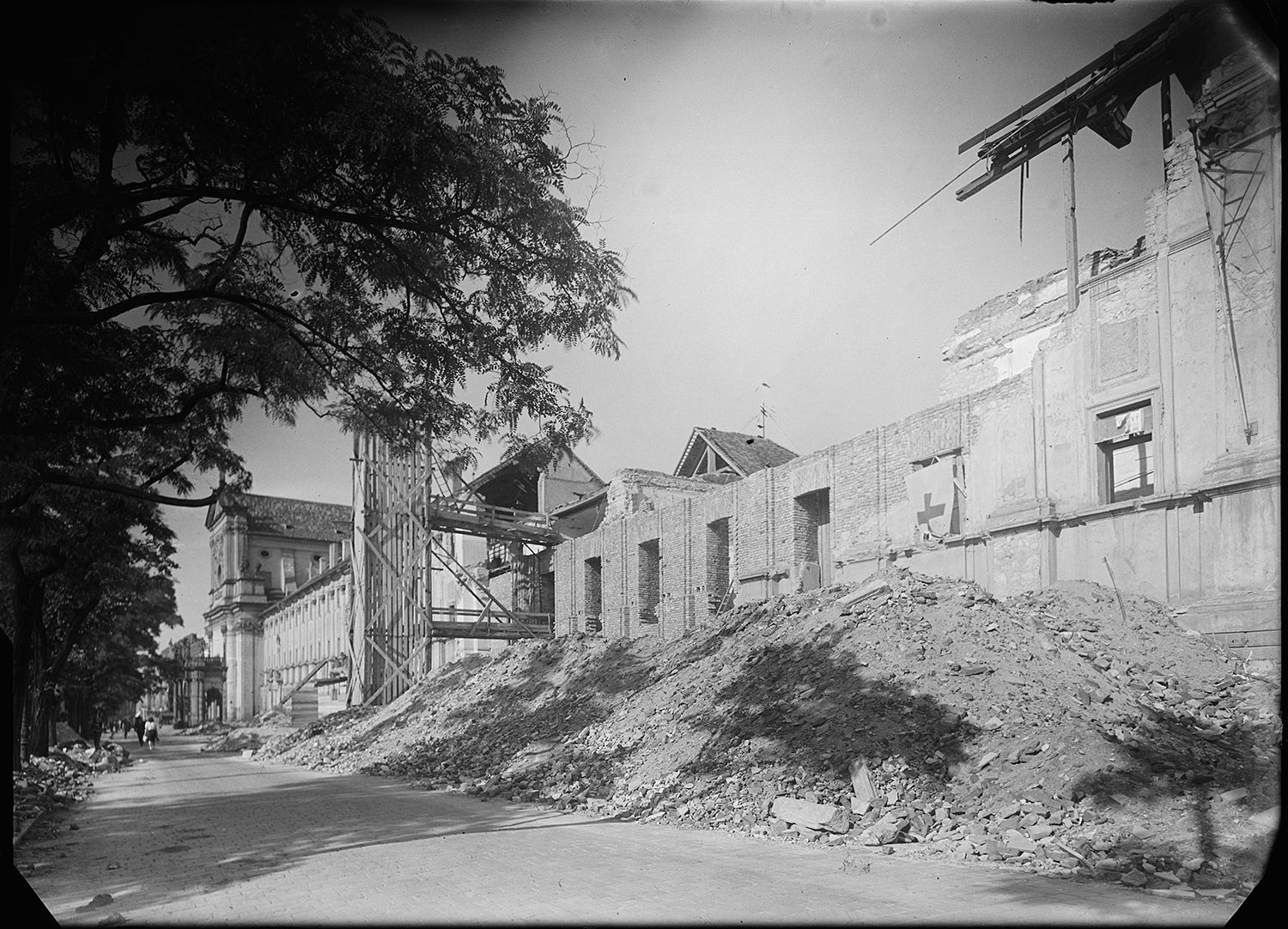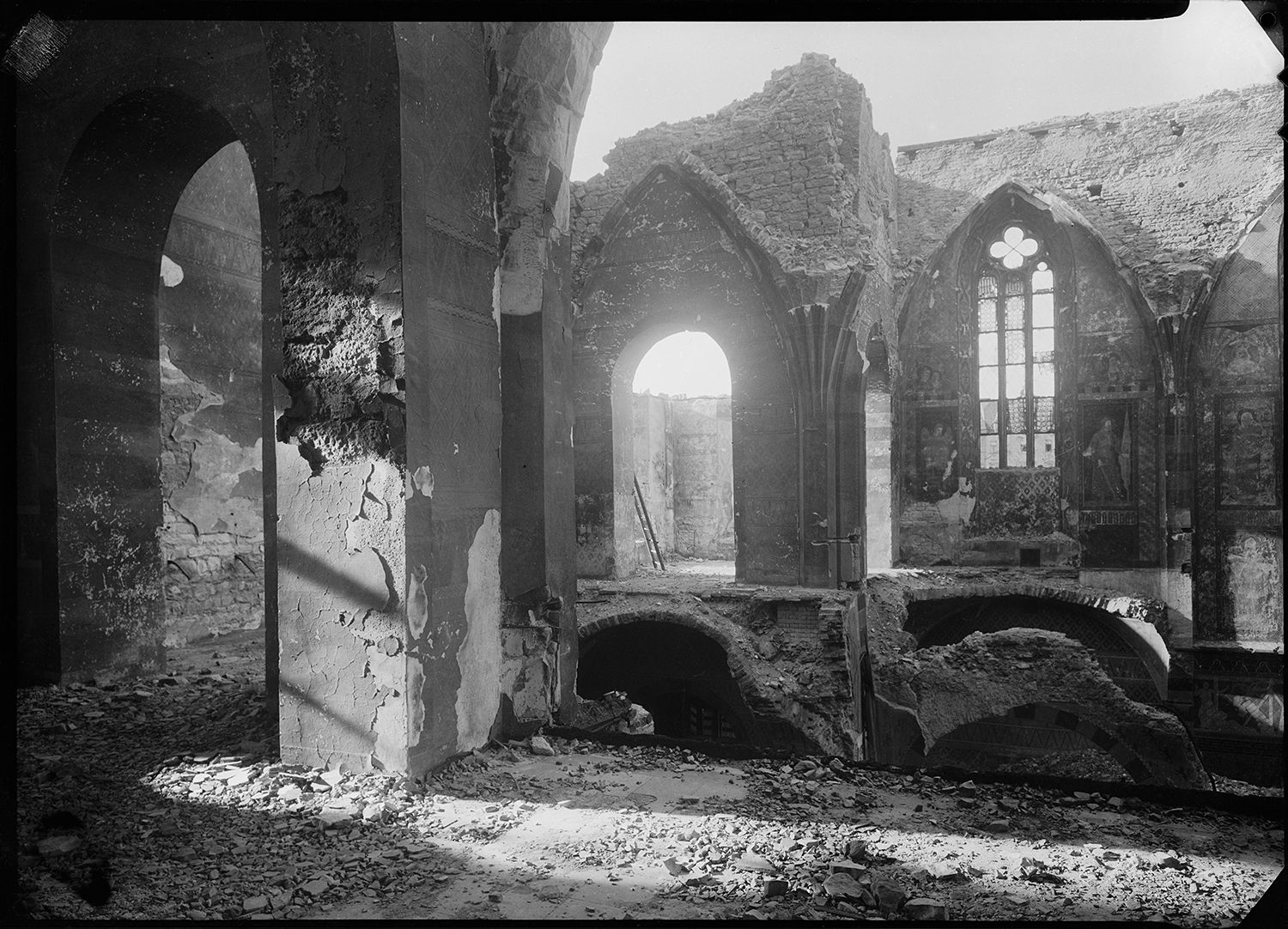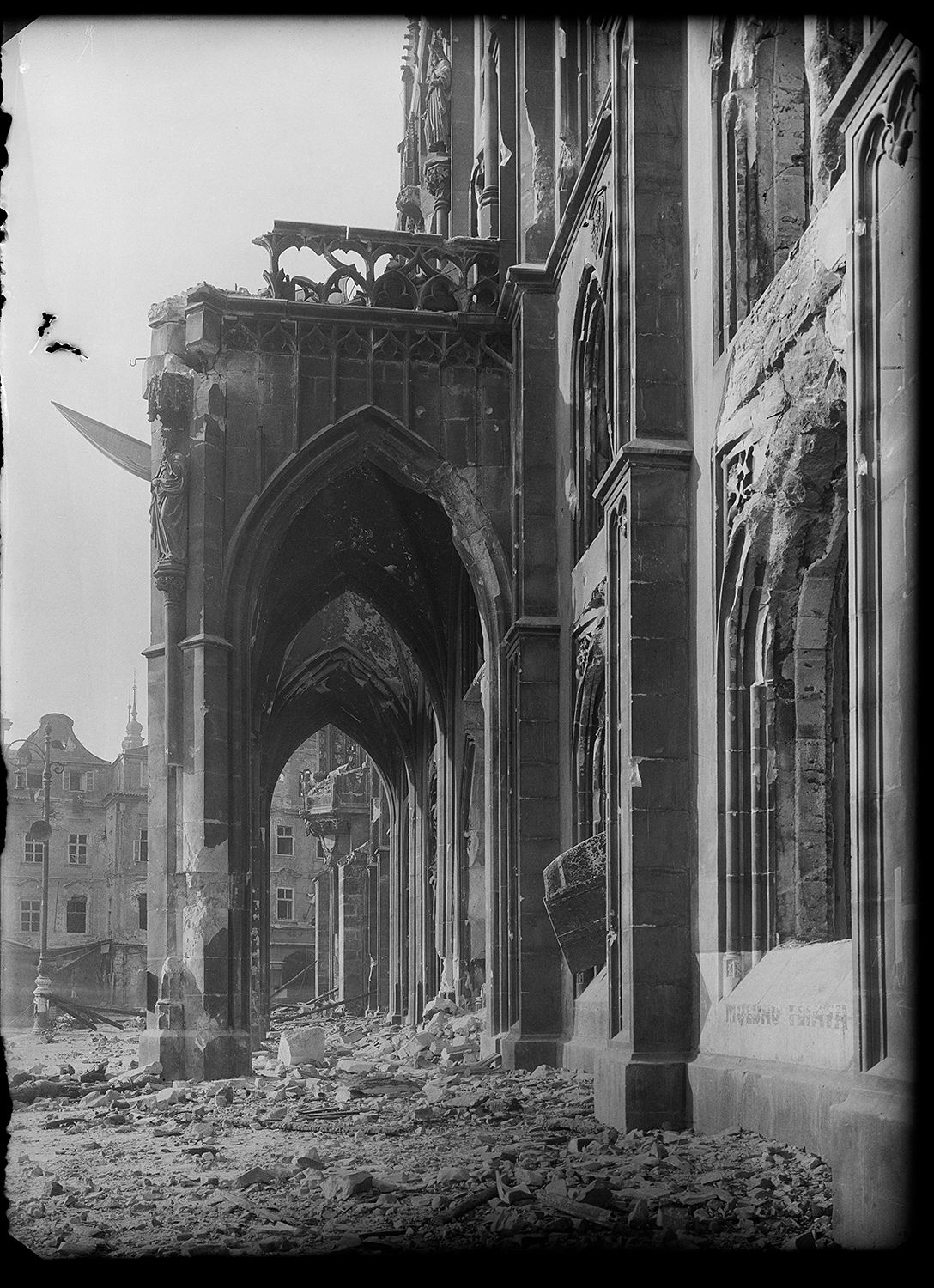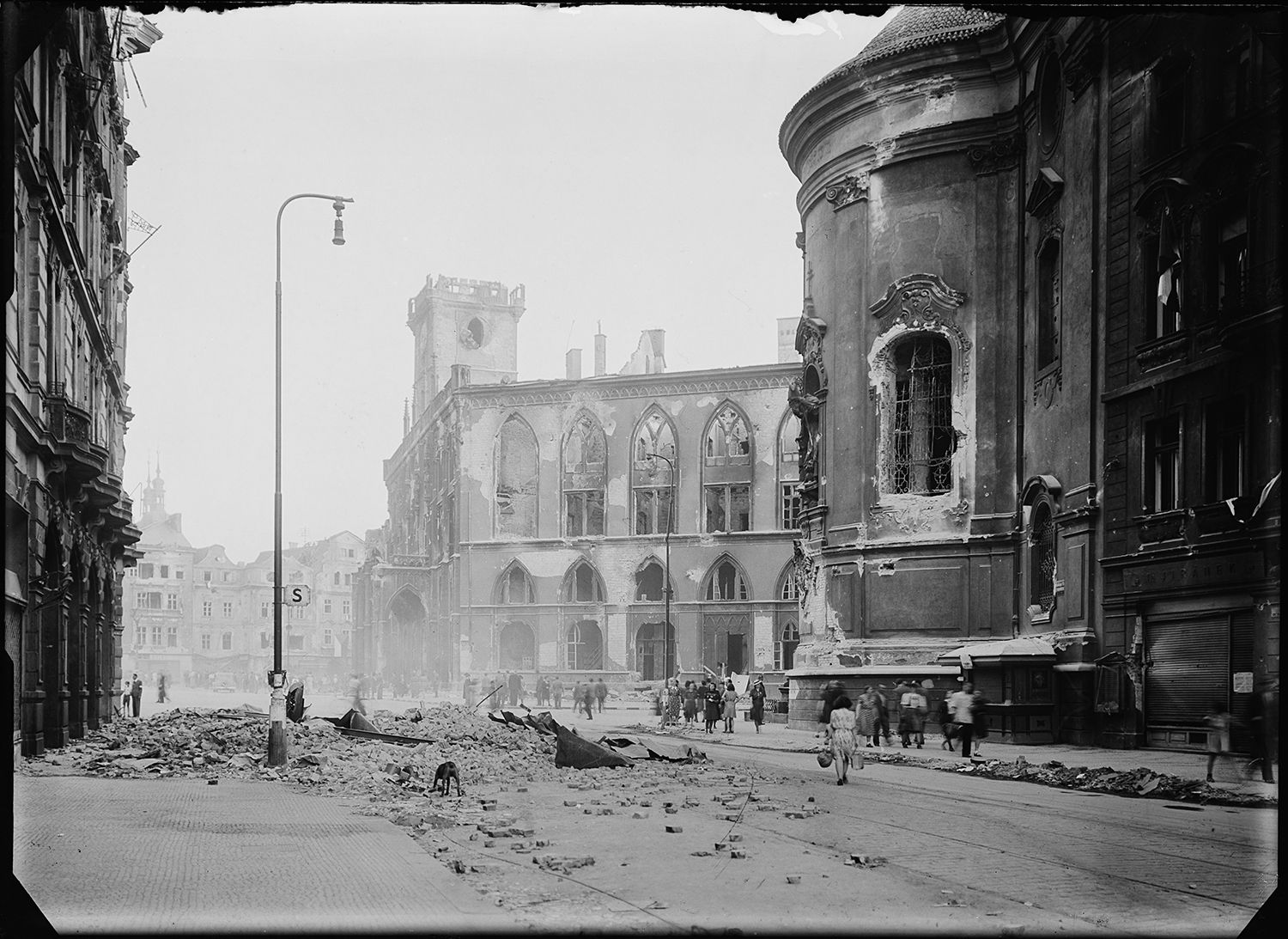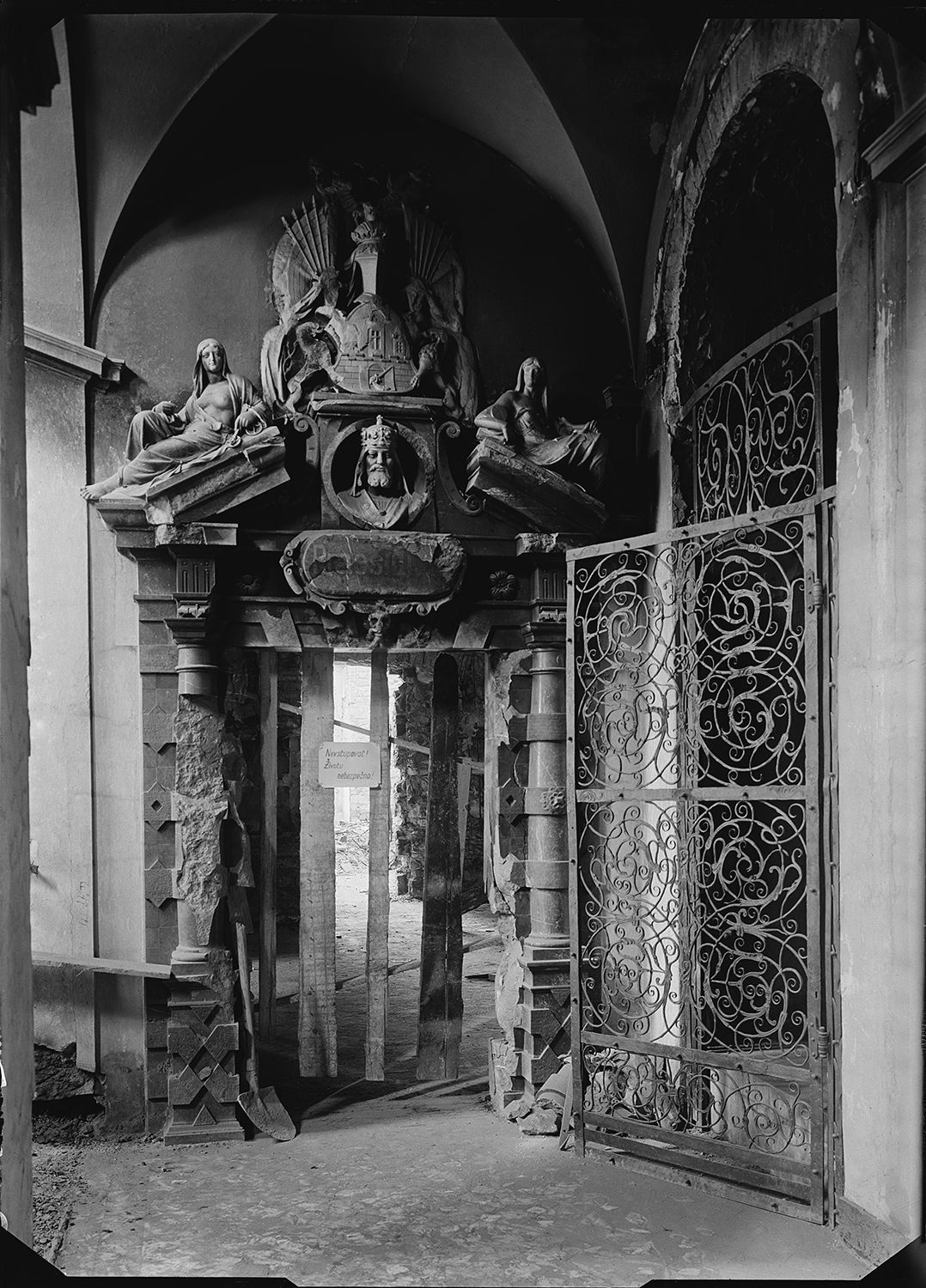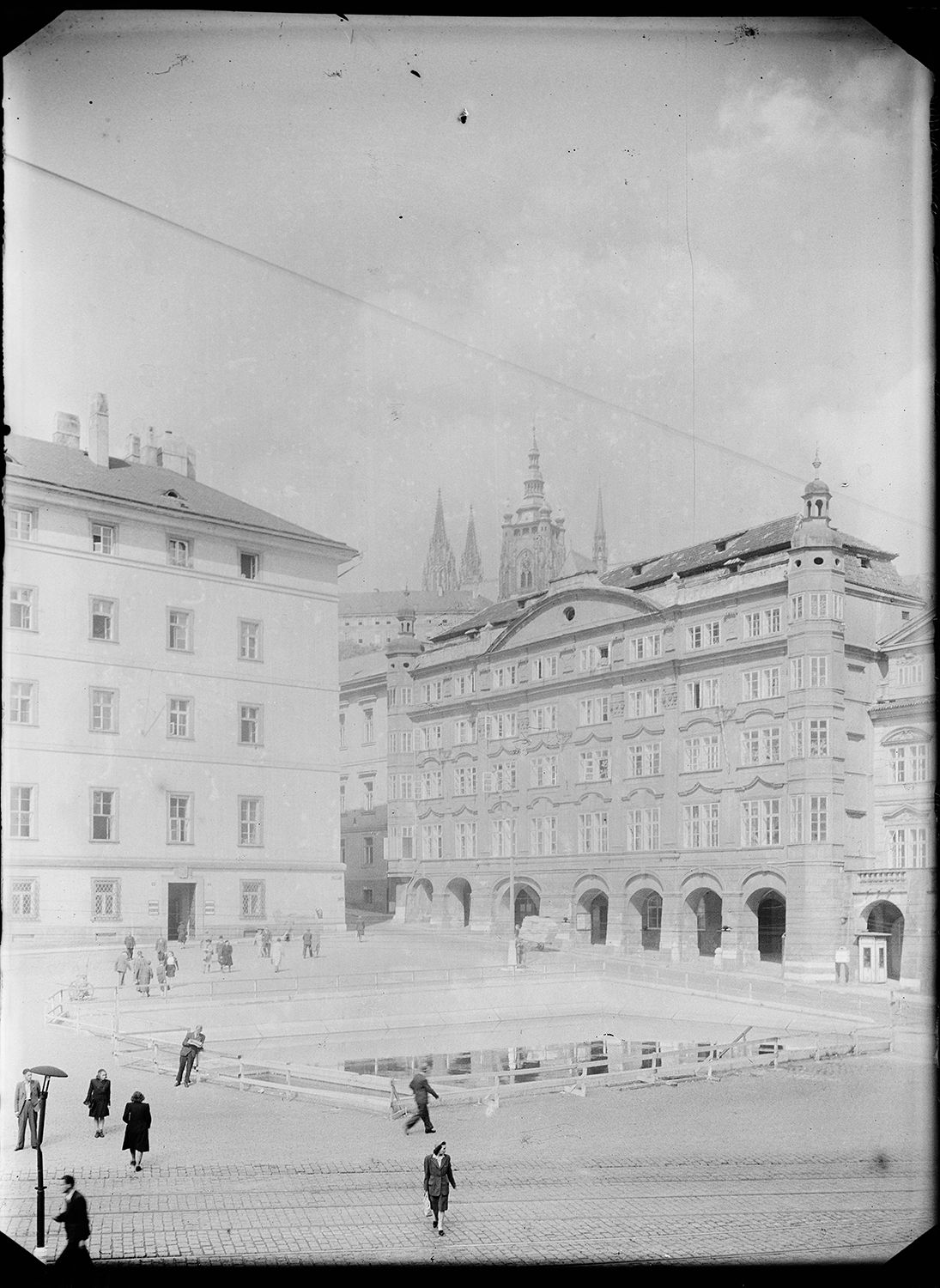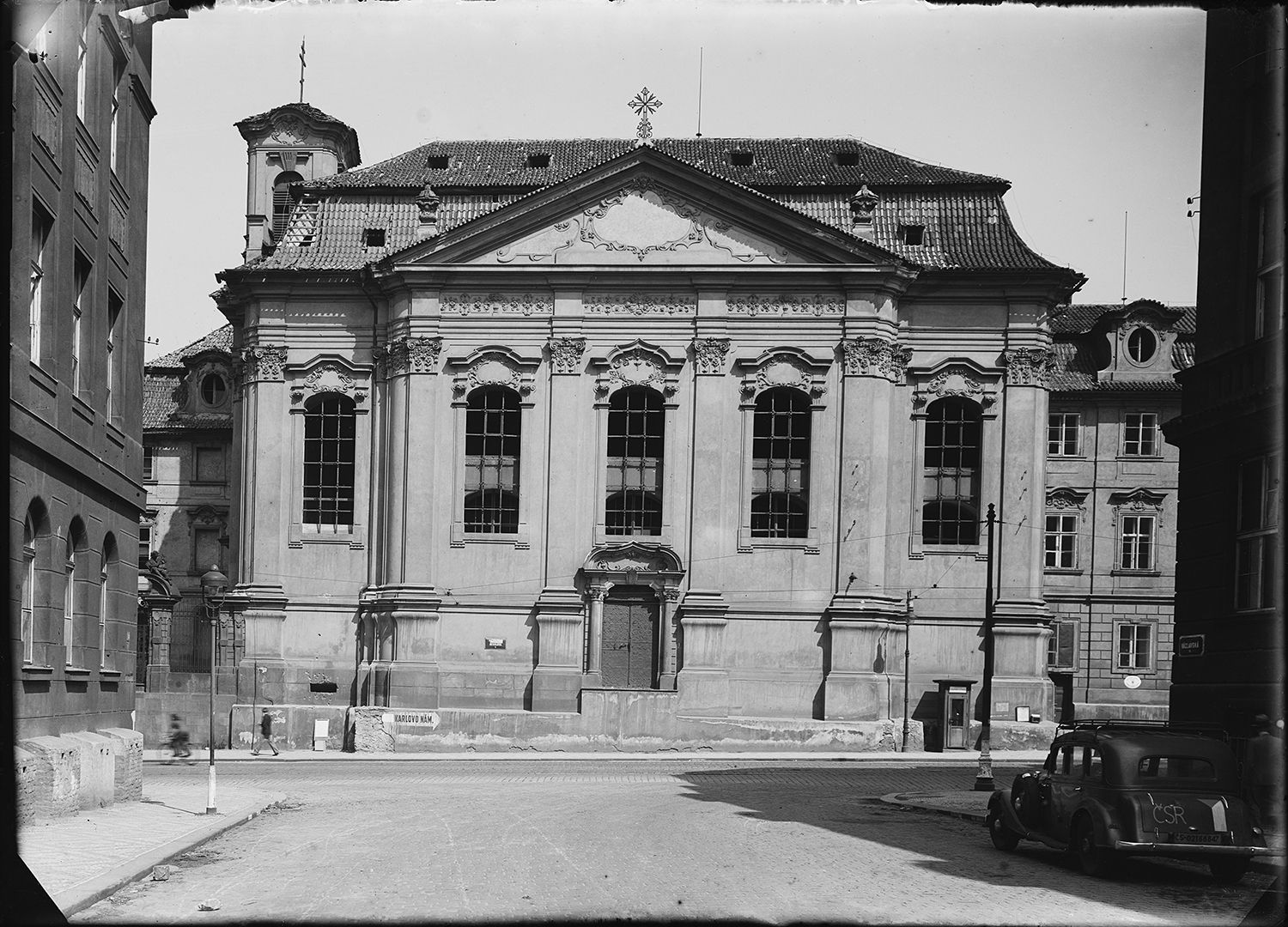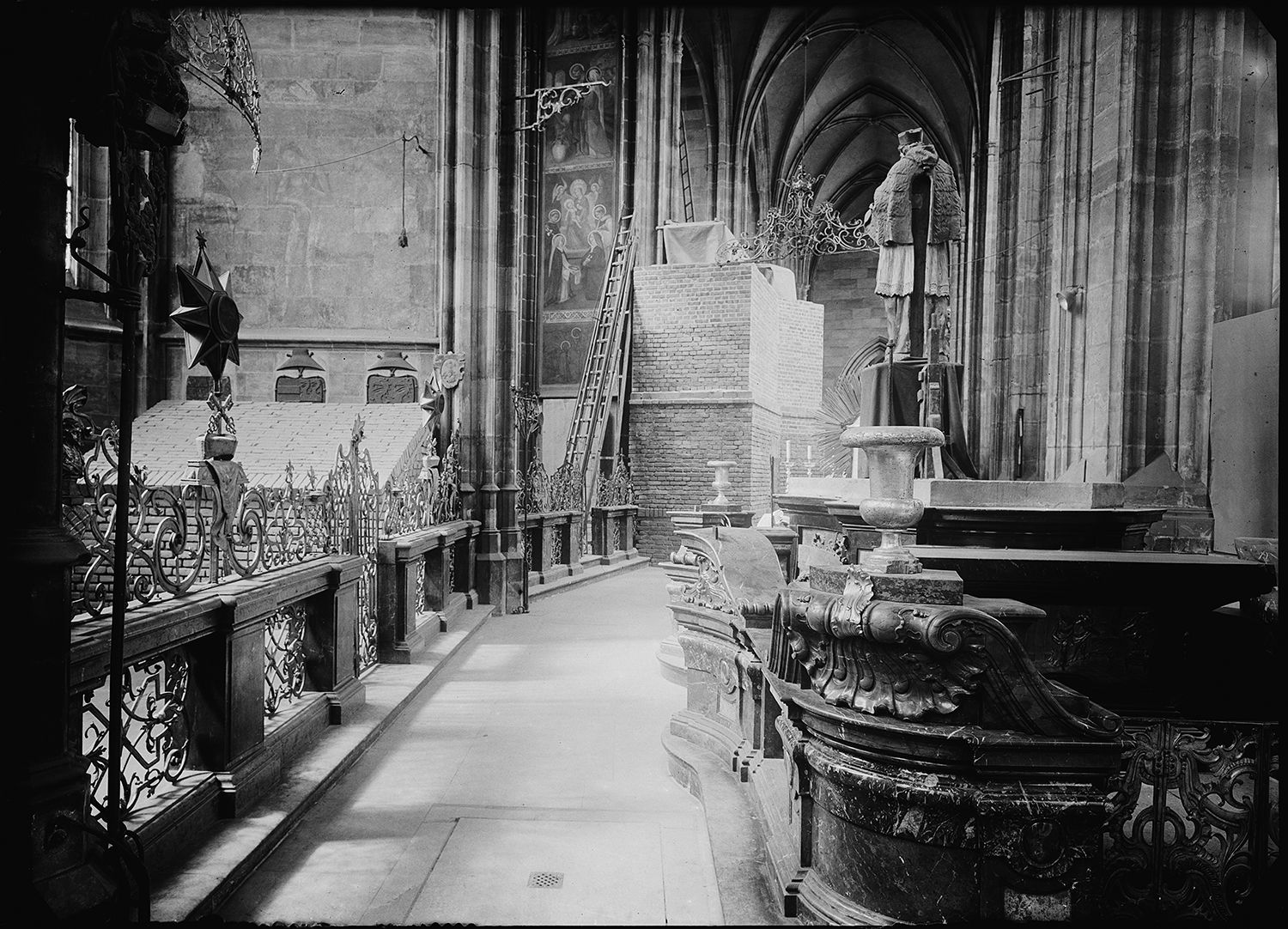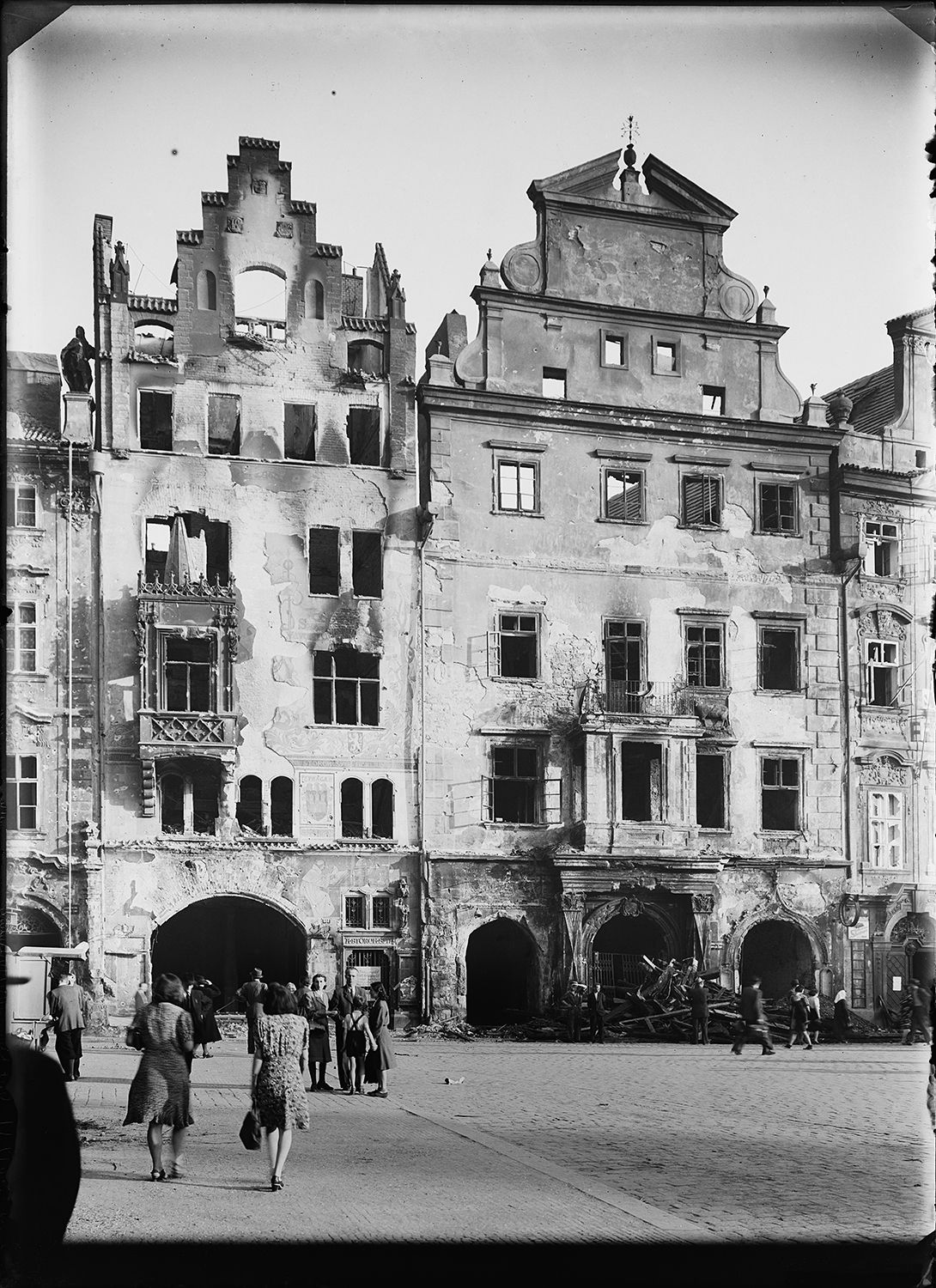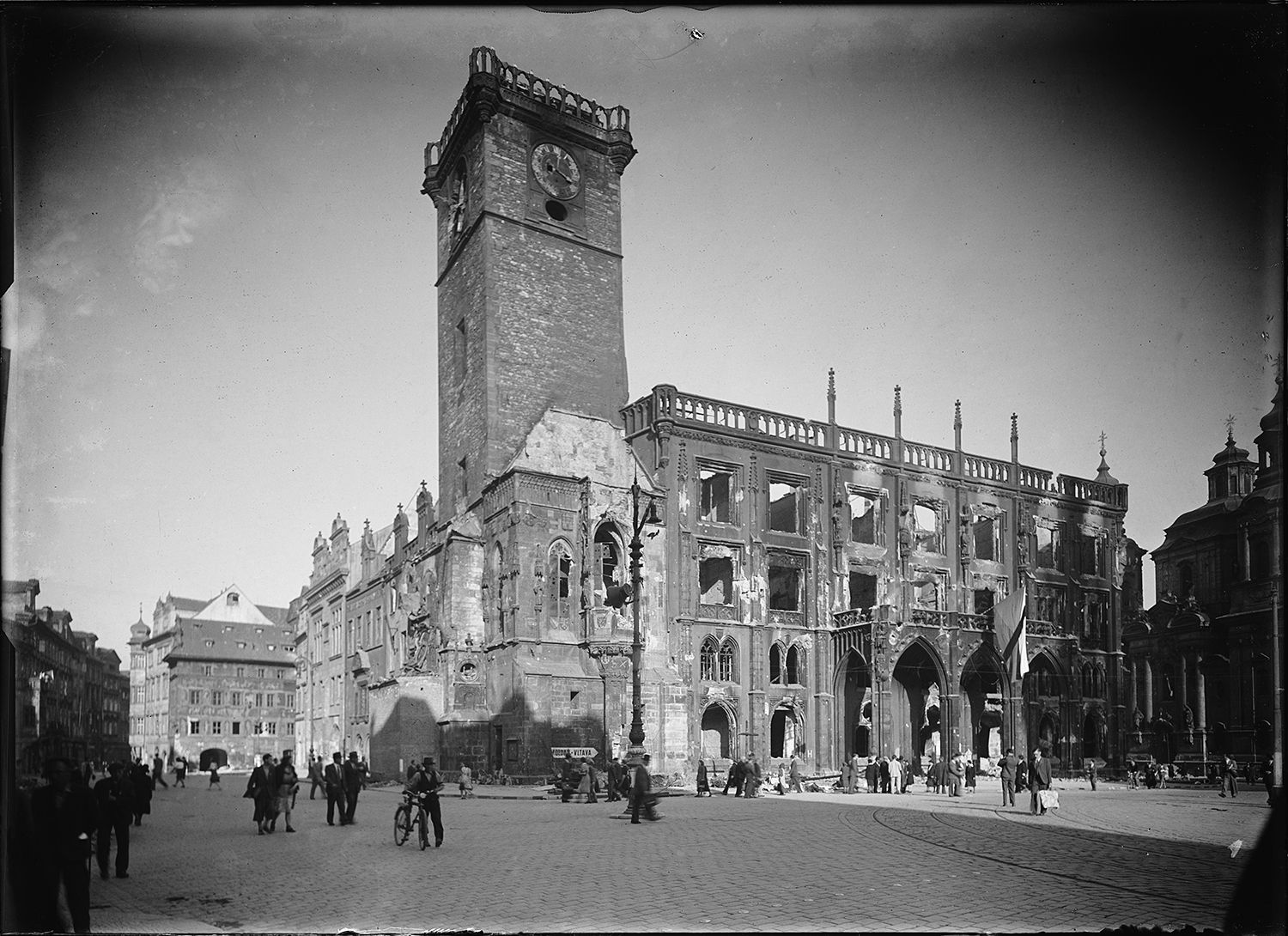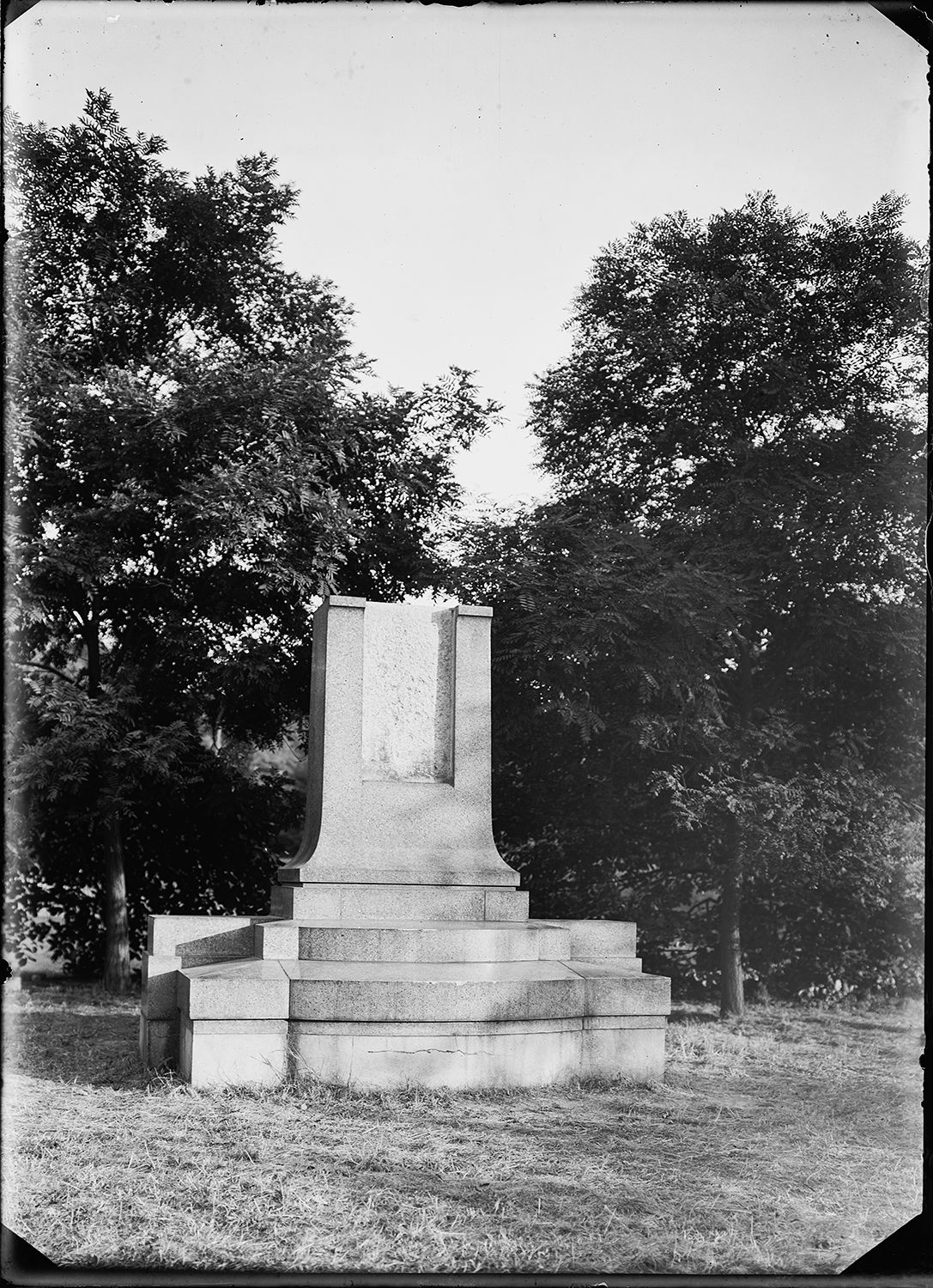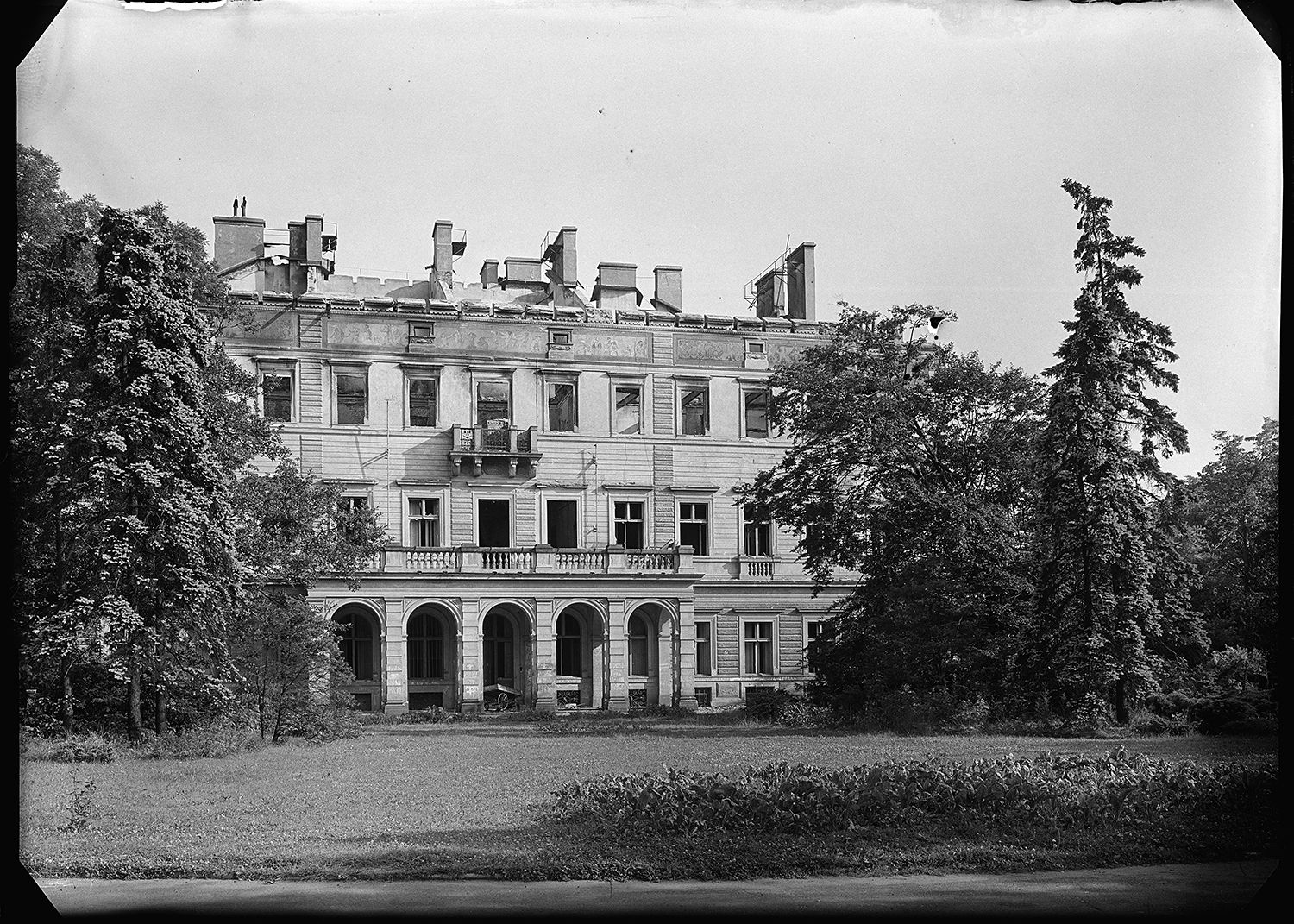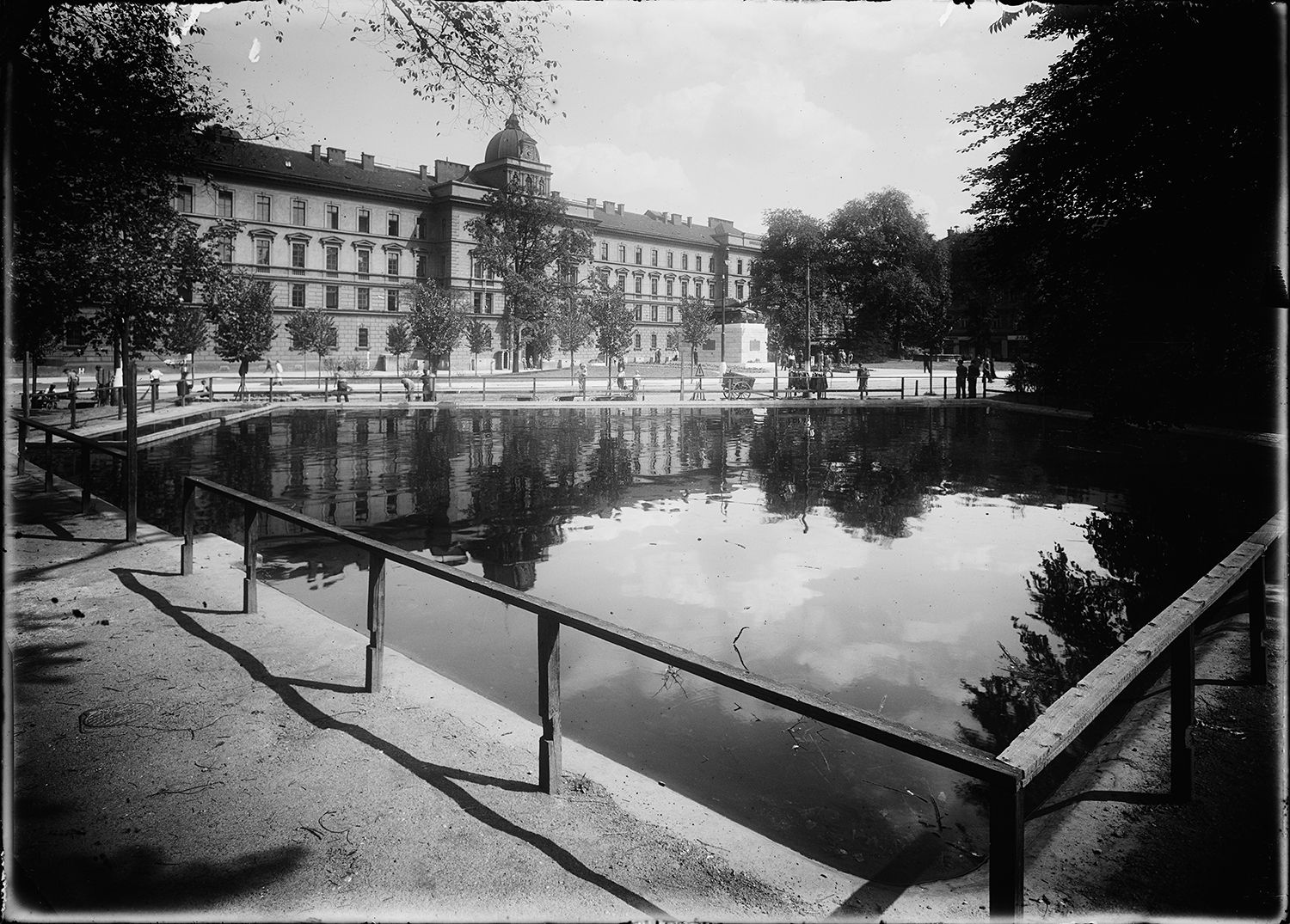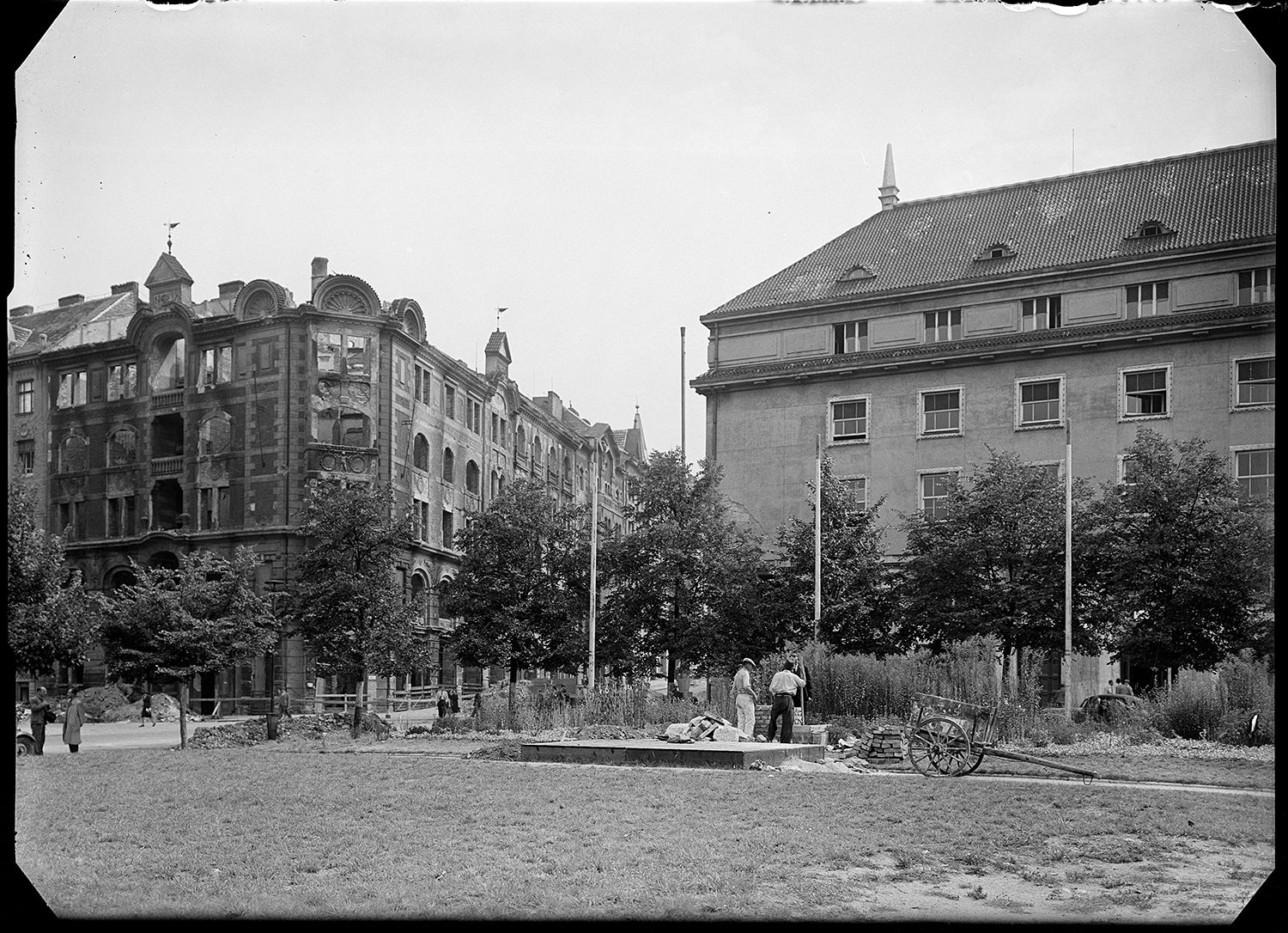The map of places affected by World War II makes accessible the interesting and thus far under-researched collection of photographs by Josef Sudek. The set consists of 366 large-format negatives housed in the photo library of the Institute of Art History at the Czech Academy of Sciences. In some cases, positive prints have been preserved as well. The photographs were largely meant for the "Prague Calendar 1946", subtitled "Prague's Cultural Losses 1939–1945". Printed by Václav Poláček's publishing house, this weekly calendar includes 53 photographs by Josef Sudek and a foreword, in which art historian Zdeněk Wirth assesses the damage to Prague heritage monuments caused by the war.
Focusing on topography, this web-based interactive map is the first to evaluate the whole set of Sudek's negatives. The map contains detailed descriptions of the photographs and offers GPS navigation around the various locations, while also allowing users to view the images thematically via subject filters. A printed version of the map has the form of a small pocket guidebook with photographs and basic information. It offers three interconnected walks through selected localities and encourages readers to use the web application for a more detailed study of these places.
The map is a result of the project “Josef Sudek and Photographic Documentation of Works of Art: From a Private Art Archive to Representing a Cultural Heritage”, which was supported by the Ministry of Culture of the Czech Republic with the Program of Applied Research and Development of National and Cultural Identity (NAKI II), id. code: DG16P02M002.
Introduction
World War II came to the city of Prague at its end, bringing destruction and pain. In 1945, professional and amateur photographers alike set out to document the pivotal moments of the end of the war and the devastation it left in its wake. Josef Sudek (1896–1976), an admirer and devoted observer of Prague, was among these photographers. Unlike many others, he did not report on the lost human lives, but rather aimed his lens at the transformed city—demolished buildings, monuments turned into ruins, empty pedestals of the city's memorials, as well as temporary wartime structures, like water tanks used to fight fires, or the storage facilities for confiscated metal at the Holešovice docks.
In 1945, two major events marked Prague's urban landscape. On February 14, the city was hit by a mistaken Allied bombardment which especially affected the heritage buildings in Prague's second district (New Town). Sudek concentrated on the the destroyed Emmaus Monastery and surrounding area. In May, the Prague Uprising culminated in the liberation and the end of the war, but it also brought destructive attacks by the city's occupiers. Of the heritage monuments damaged during the uprising, Sudek documented largely the area around Old Town Square. He also recorded the storage of confiscated sculptures in Maniny, the third heritage area to attract his attention as an artistic theme in its own right. There, he mainly photographed sculptures from Prague memorials, stacked in surrealist assemblages in different parts of the compound.
Josef Sudek was himself a veteran of World War I. In 1916, he suffered an injury while on the Italian front and his right arm had to be amputated. After his return to Prague, the twenty-year-old Sudek, originally trained as a book binder, re-qualified as a photographer. By 1928, he had already started his own business. However, the usual commercial portrait photography did not satisfy him, so he focused his professional efforts on capturing artworks and heritage monuments. He collaborated with artists and theorists as well as with book and magazine publishers, especially the Družstevní práce (Cooperative Work) publishing house and artists' associations such as SVU Mánes (Mánes Association of Fine Artists) and Umělecká beseda (Artists’ Club).
Most of the photographs on this map were commissioned by Václav Poláček, the director of Družstevní práce. In 1945, Poláček used the photographs as illustrations for a weekly calendar put out by his publishing house, Pražské nakladatelství. Art historian and heritage worker Zdeněk Wirth authored the texts and captions under the photographs. Prague Calendar 1946, subtitled Cultural Losses in Prague 1939–1945, contains 53 photographs by Sudek. They are part of a collection of photographs held at the Institute of Art History at the Academy of Sciences of the Czech Republic and form the basis of this web application. In total, researchers identified 366 negatives that document places in Prague affected by World War II. Except for four smaller-format negatives (8 x 8 cm), all the negatives are 13 x 18 cm and made on plastic or glass sheets. The author's positive prints have been preserved for a part of the set and are held largely in other institutions (Museum of Decorative Arts in Prague, Archive of the City of Prague, National Gallery of Canada in Ottawa, private collections).
Aside from Poláček's commission, which have only been documented by the book-keeper's records and preprint blow-ups of the photographs, the set contains photographs that are entirely atypical for Sudek. The majority of these photographs were not included in the calendar. Sudek may have taken them on his own initiative and his intentions concerning them remain unknown. They are photographic reports of the chaos and destruction following the Prague Uprising in May 1945, covering exclusively the areas of Old Town Square and Wenceslaus Square. Although the photographs largely focus on capturing a particular monument, building or square, the city's inhabitants sometimes appear as a distinctive motif in the photographed scene. Here, Sudek eschews his usual effort to capture an abandoned, calm place, revisiting his themes from the beginning of the 1920s (for example, one of his last photo-reportage series, the Invalidovna cycle, was made almost 25 years earlier). Recollections of painter Vladimír Fuka, recorded in 1980 by Petr Hron and published in 1996 in the catalogue Roses for Josef Sudek, remarkably evoke the exceptional character of Sudek's work at the time. Fuka was Sudek's assistant in 1945, usually helping him transport and build his equipment. Fuka describes the situation at the end of the war as suspenseful and action-packed :
“Before long, I was running with Sudek to the centre of the burning city. Because of the Prague uprising, the front was there, too, in New Town, by the city hall and by the Gothic church. For the first time in his career, Sudek became a photo reporter. His camera was too heavy and clumsy for such a trade. With its glossy wooden tripod, it seemed to me as a rare, bizarre piece of furniture. We must have looked absurd, assembling this antique specimen in the middle of the smoking ruins on Old Town Square. People were shouting at us: “Get lost, fools, there's shooting going on ...” The shots from the slow and heavy Russian tanks alternated with the treacherous bullets of Nazi snipers hidden on the roofs of the buildings. After just a few seconds, Josef's black camera cloth, covering his head in preparation for the first shot, turned white in whirling clouds of dust, from which his voice resounded: “I've done my own shooting all right, so let them shoot.” I grabbed Josef and dragged him inside the gate of a baroque palace, so he could continue working with at least a bit of shelter. This is how those few photographs, so rare and unique in Sudek's oeuvre, were created. That day, in May, 1945, the war ended.”
This undoubtedly valuable recollection likely gained more colour as time went by and needs to be taken with a grain of salt. Unlike some of the archival photographs by other photographers, none of Sudek's preserved negatives show fighting, not even people putting out fires. Sudek places his clumsy apparatus among crowds of onlookers no longer afraid of the shooting or among the nearly collapsed buildings, so we can take part in these events through his images. This way, Sudek himself, even though he was a veteran with limited physical abilities, actively participated in the war. With his camera, he mapped his beloved city, contributing to our knowledge of the harsh moments of Czech history. The photographer thus represented the nation whose situation president Edvard Beneš described as follows: “Even though we could not fight at the beginning of the war, at least the world saw that we wanted to fight at its end, and that the spirit of resistance was entirely spontaneous in the whole nation.” (Pražská květnová revoluce 1945. Sborník statí o pražském povstání a jeho ohlasu, Prague, 1946, n.p.)
About the Map
Photographer: Josef Sudek
Sources of digital reproductions: Josef Sudek's negatives held in the photo library IAH CAS
Digital reproduction of the negatives: Adéla Kremplová, Vlado Bohdan (photo studio IAH CAS)
Digital editing of the negatives: Vlado Bohdan (IAH CAS)
Copyright: Dědicové Josefa Sudka, IAH CAS
Authors of the selection of the photographs:: Katarína Mašterová, Mariana Kubištová
Editor: Katarína Mašterová
Authors of the texts: Katarína Mašterová, Mariana Kubištová, Adam Havlík
Graphic design: Martin Groch & Tim+Tim, Richard Wilde
Webmaster: Onkubator
Language editor: Jana Jebavá
Translations: Magdalena Wells, Lawrence Wells, Hana Logan
Editor's Note
Photographs printed in the map were reproduced from negatives held in the photo library of the Institute of Art History at the Academy of Sciences of the Czech Republic. The negatives were digitally photographed and then edited. The reproductions may differ from the author's original positive print, if it exists.
The photographs we chose to publish are those which reveal the most information about heritage monuments and other places affected by World War II. The map shows all the places which Sudek visited with his camera—it is therefore a unique record of Sudek's movement in Prague. The map does not only reflect Sudek's artistic perspective, but it also focuses on the informative and historical value of his photographs.
All photographs and texts used in the map are protected under the copyright act and the licences of Josef Sudek's heirs and the Institute of Art History at the Academy of Sciences of the Czech Republic. Requests to reproduce the photographs should be submitted to the Photo Library of the Institute of Art History.


